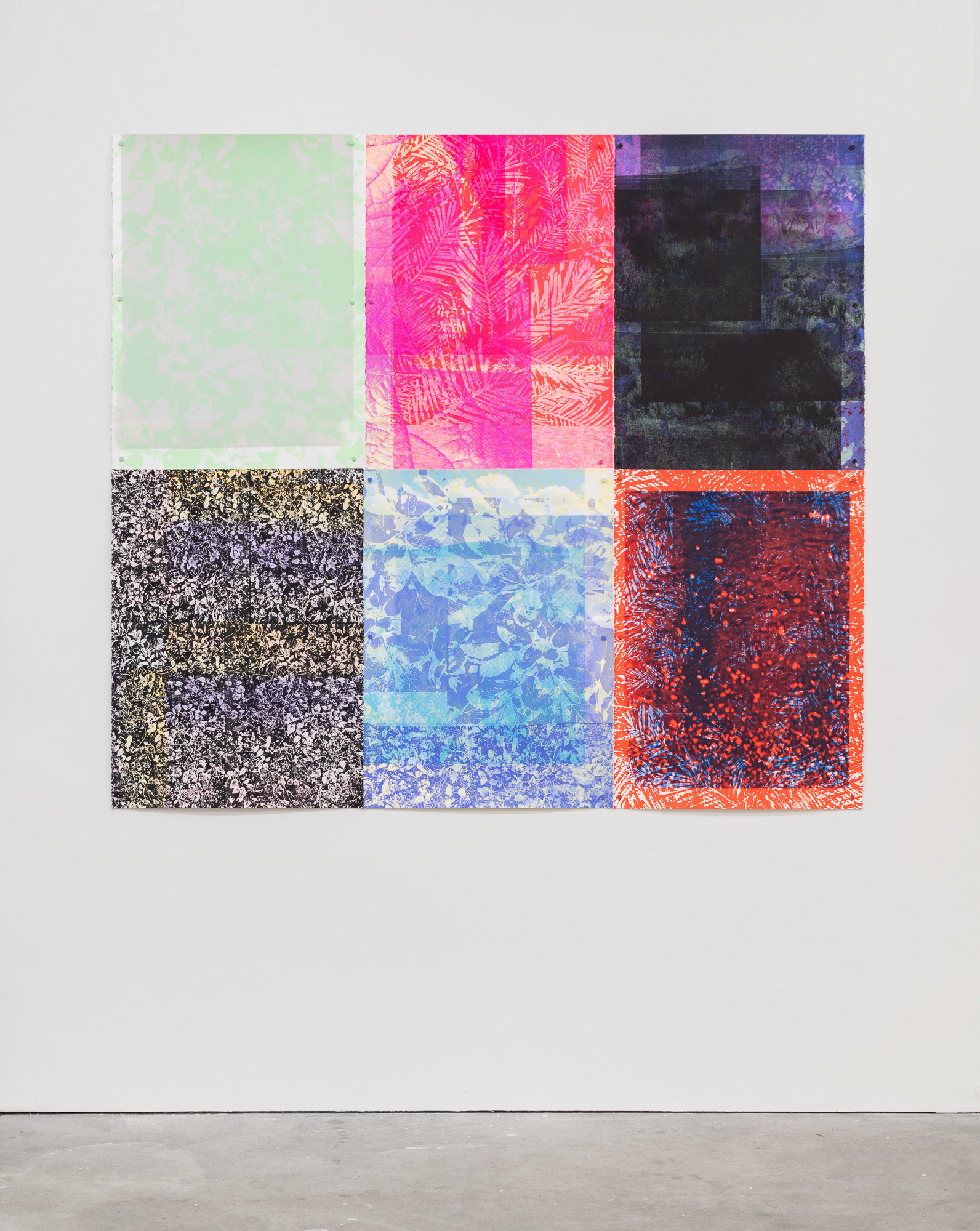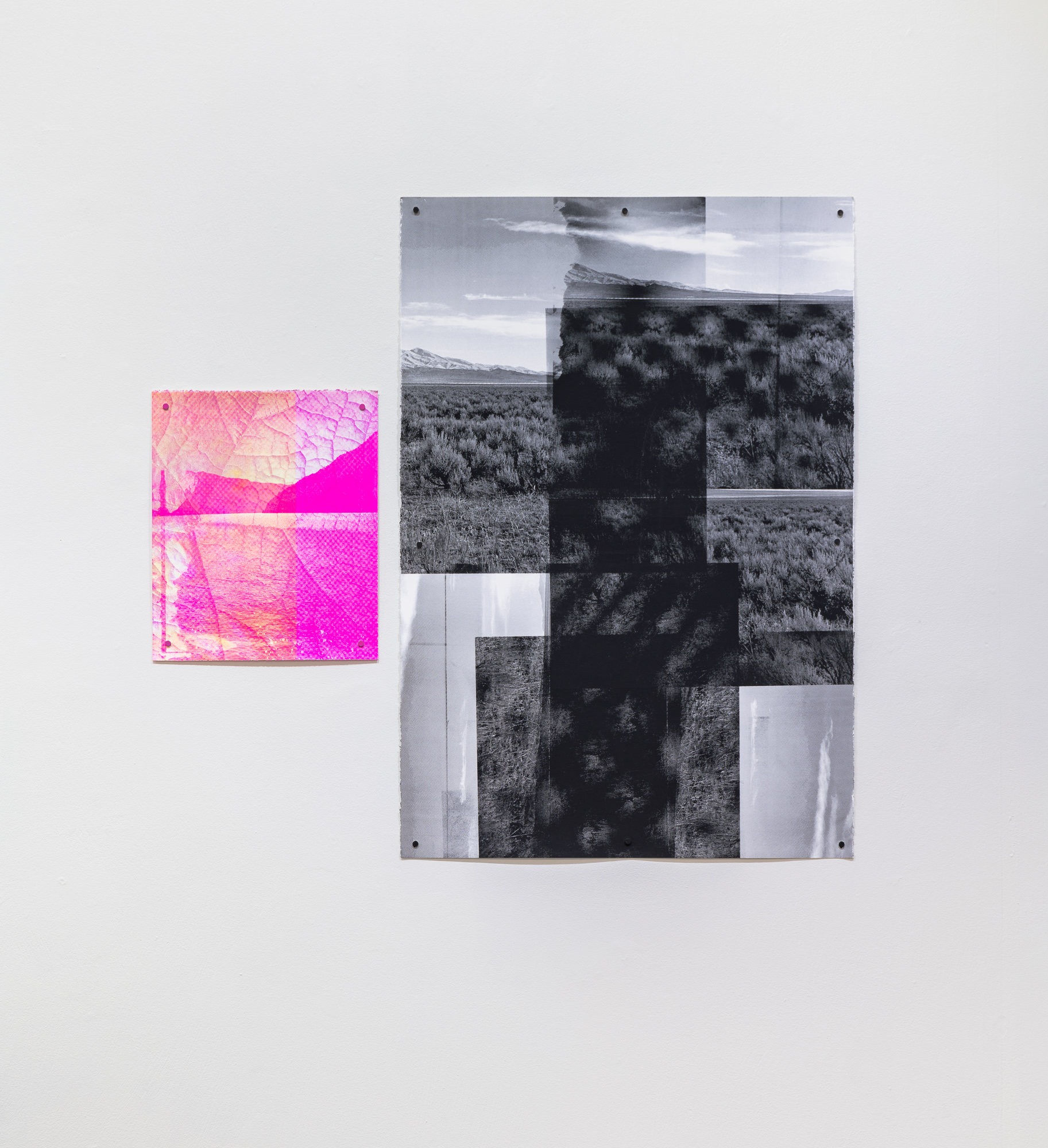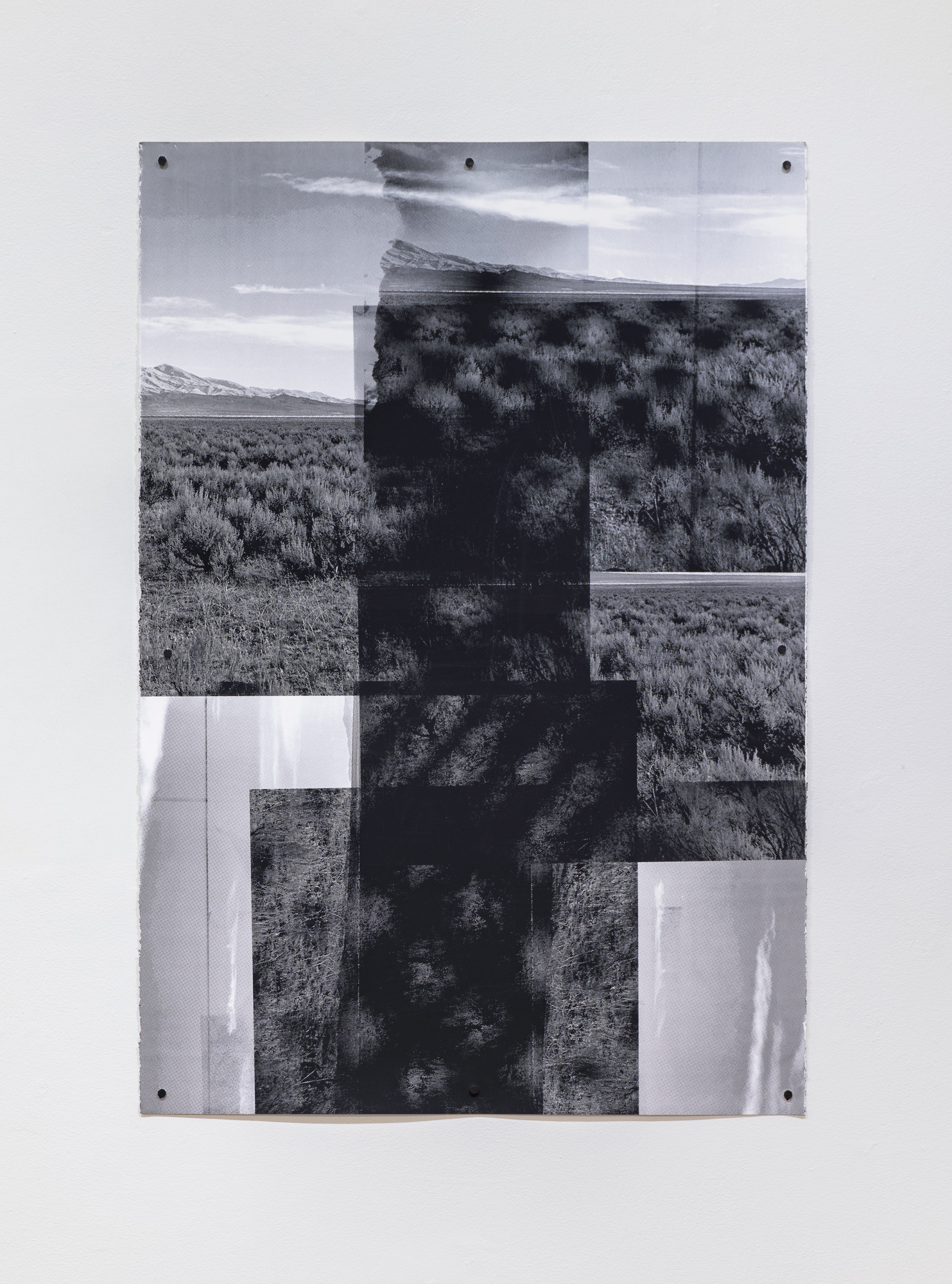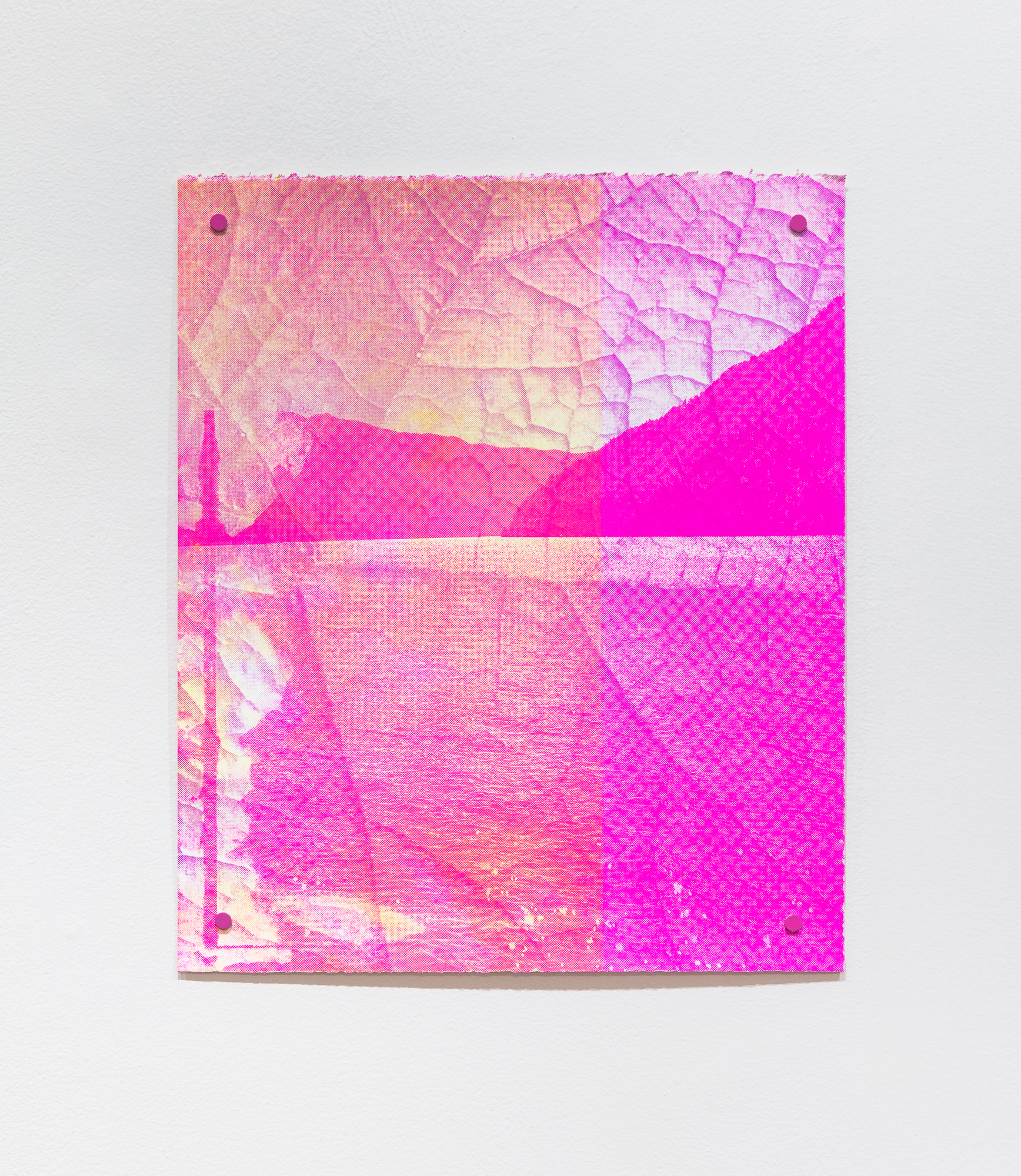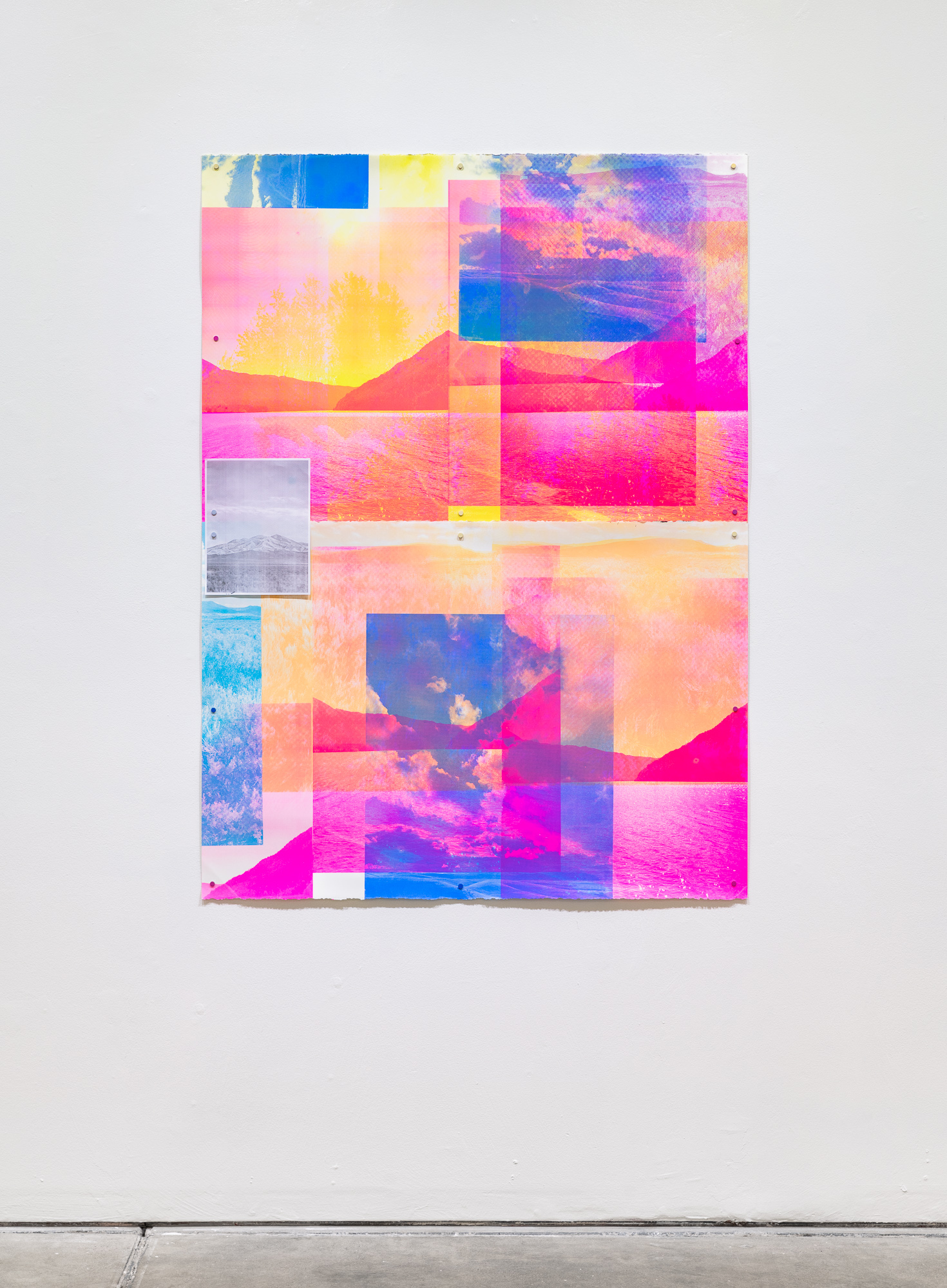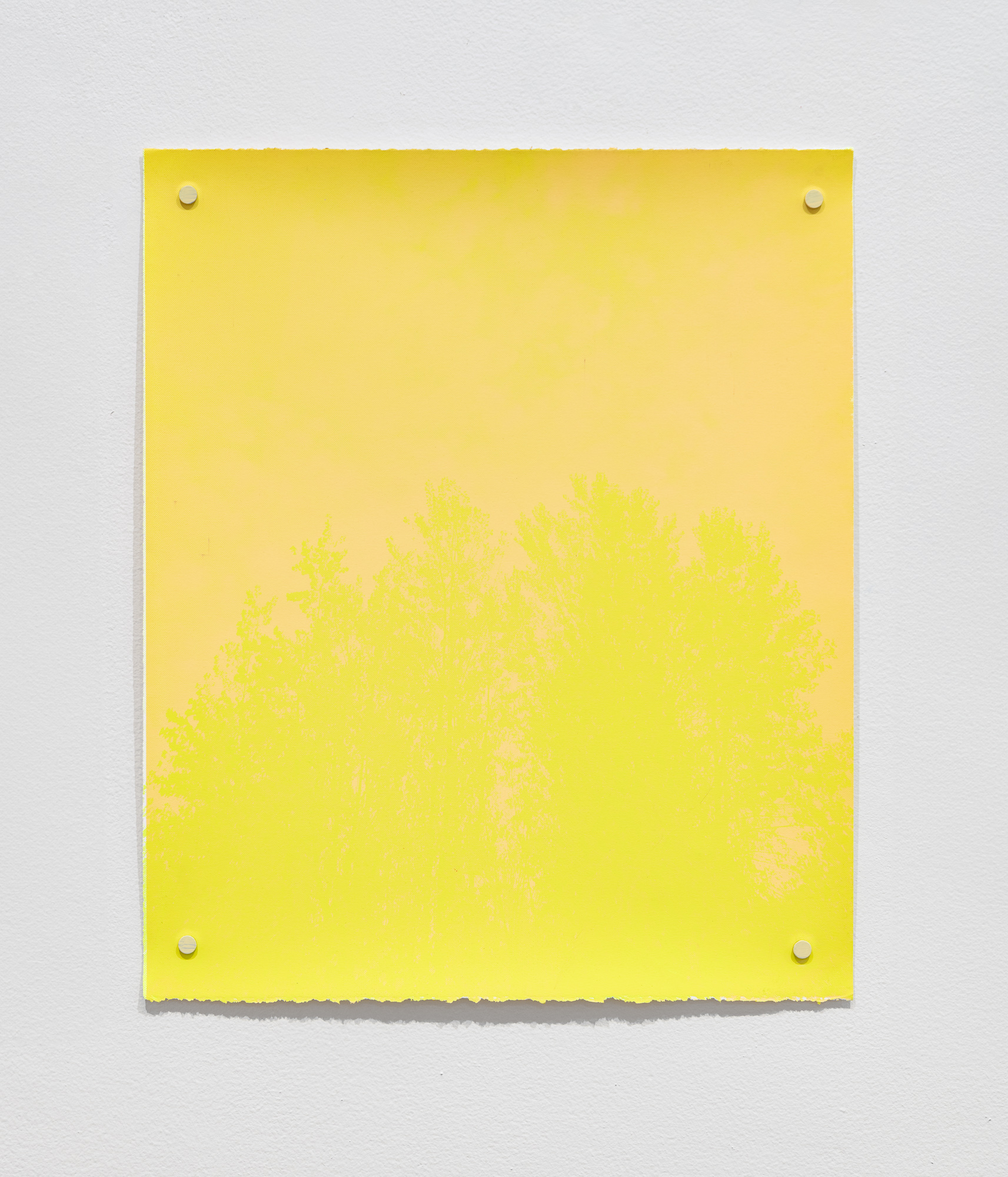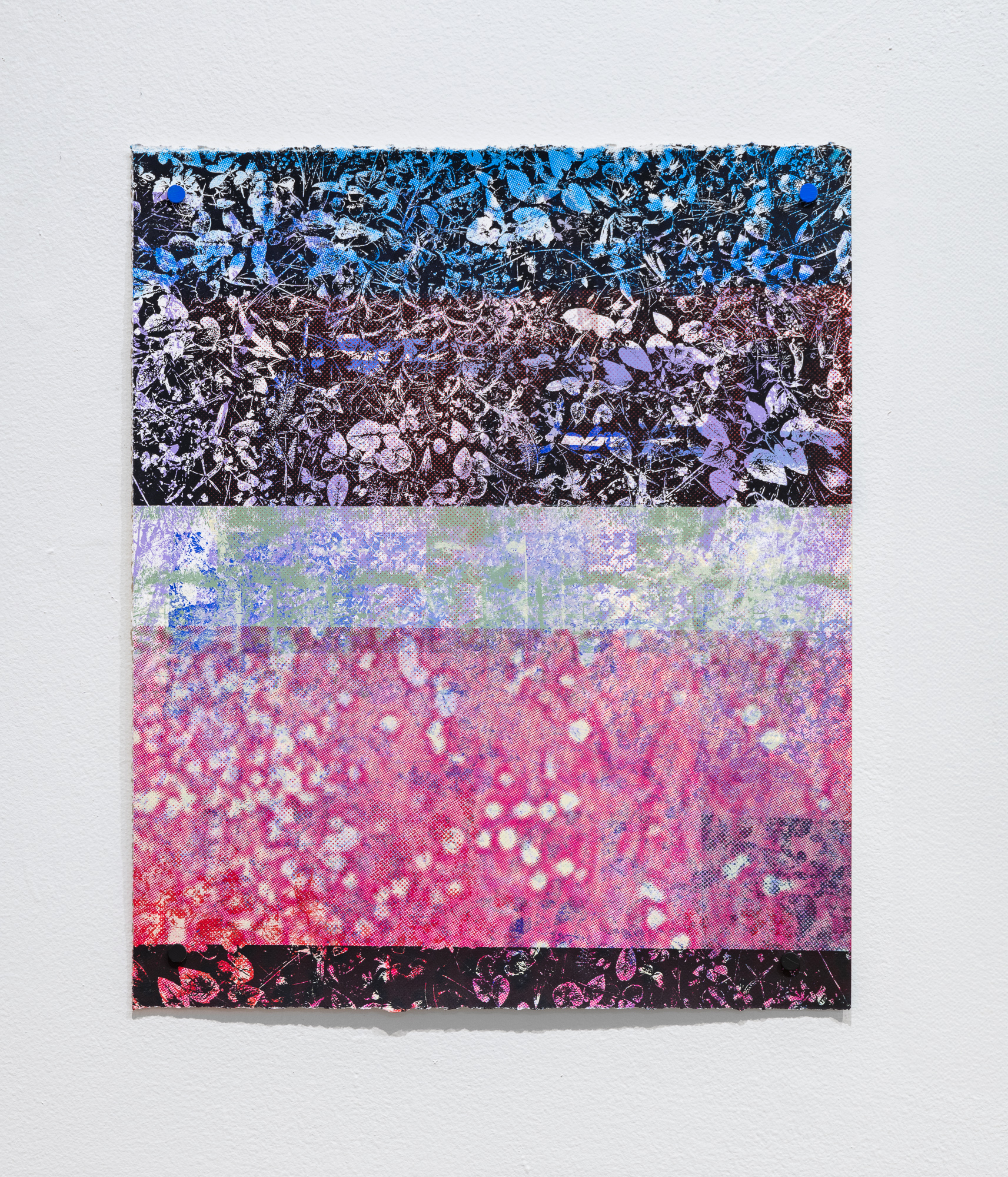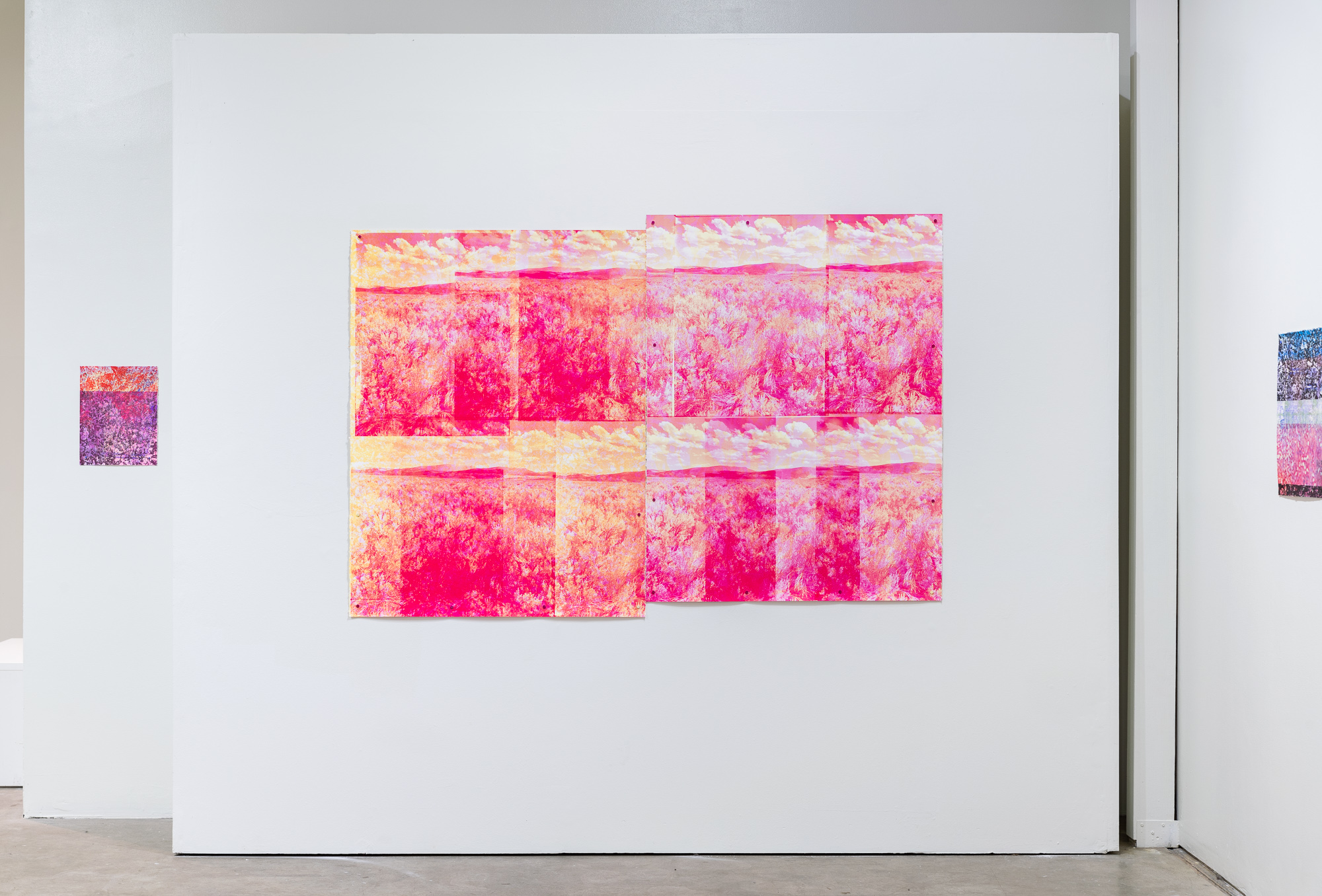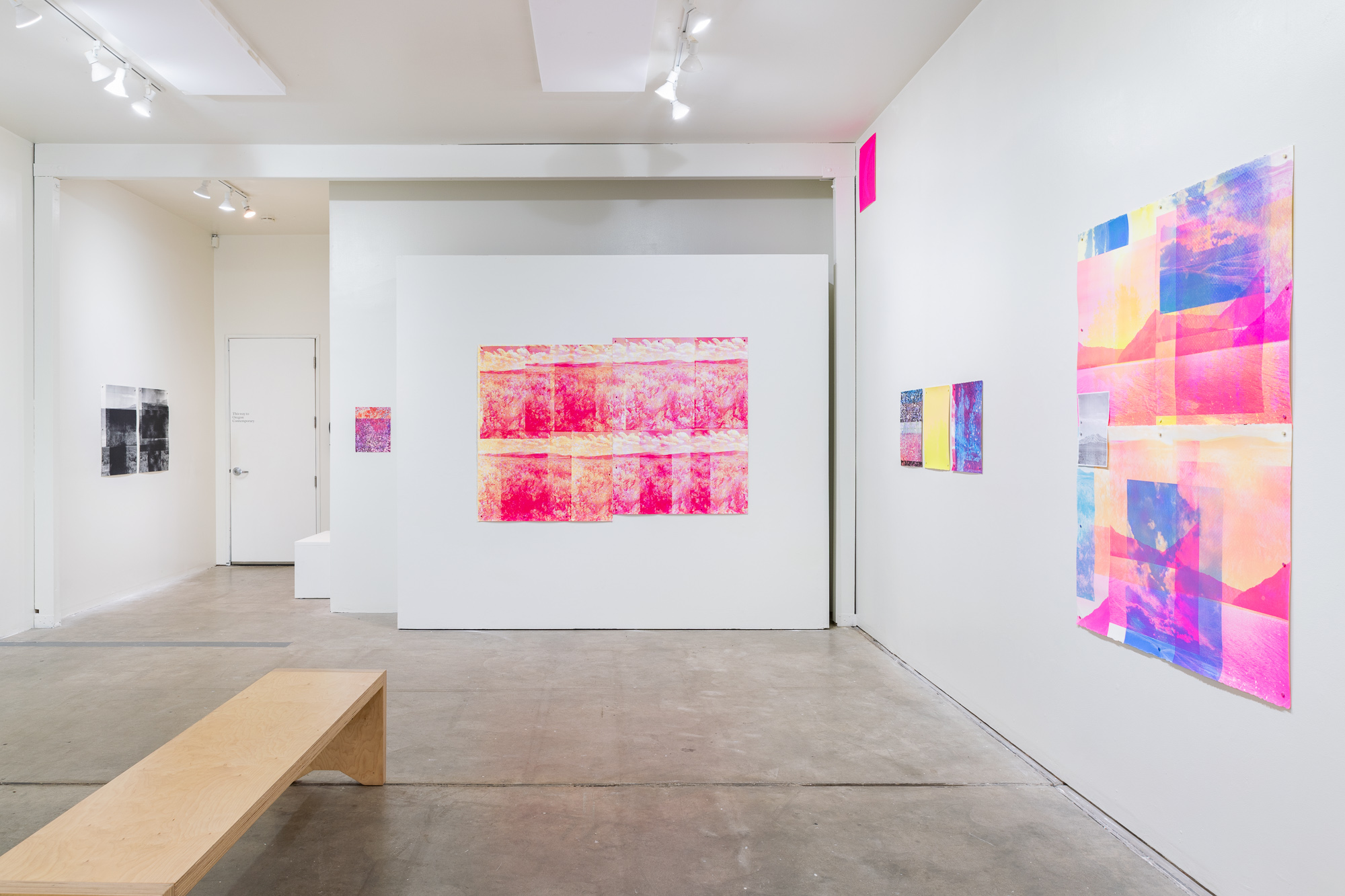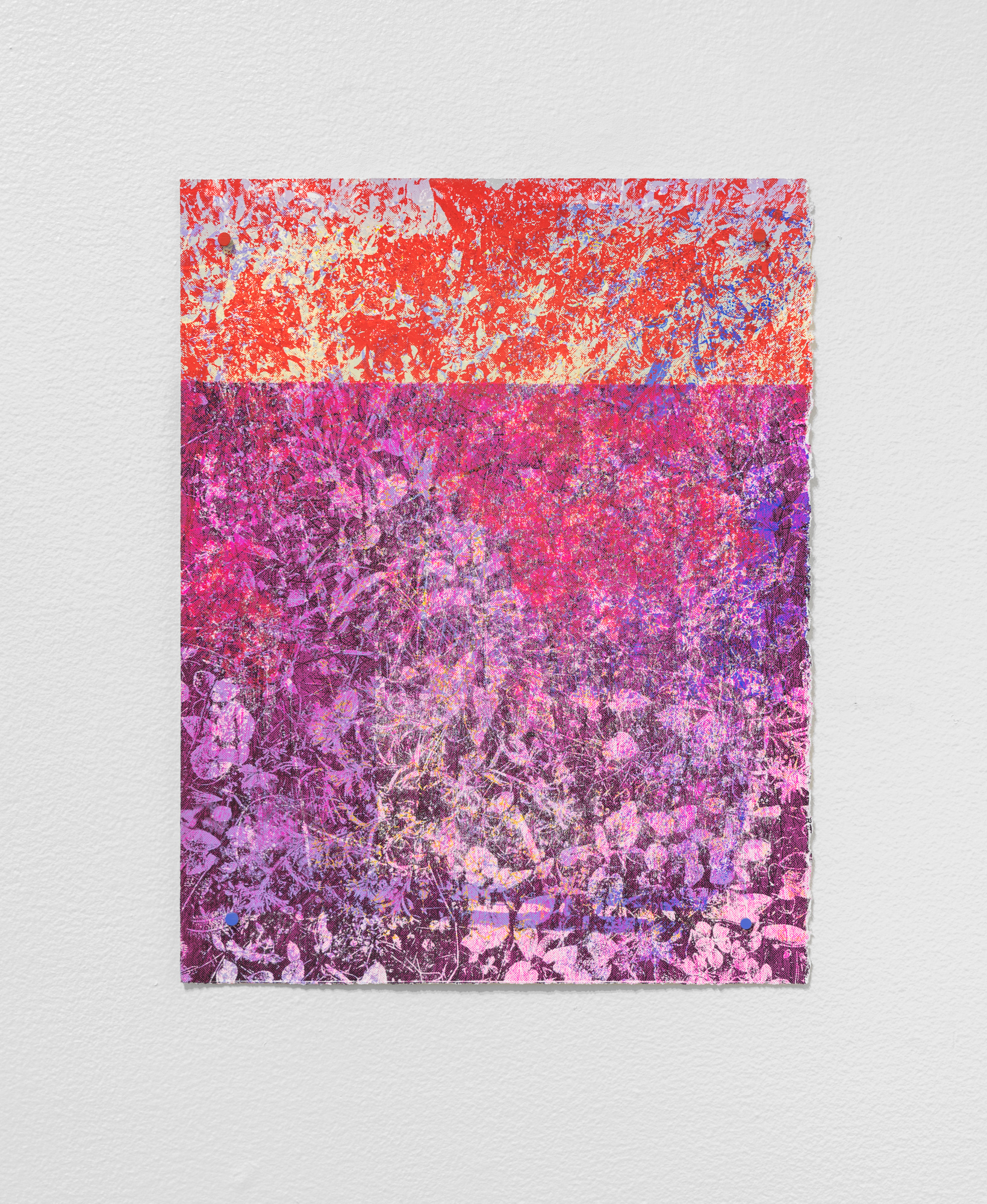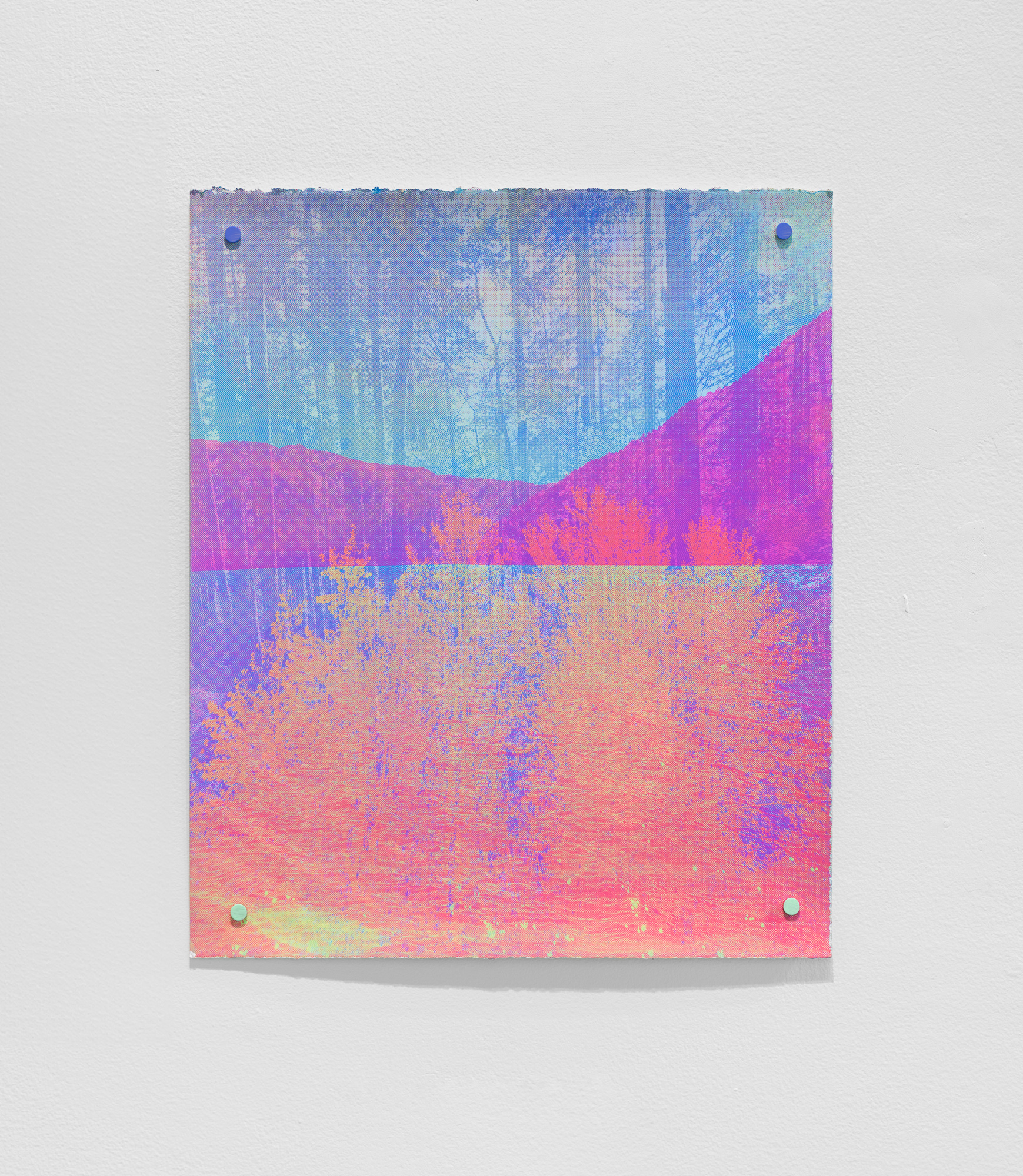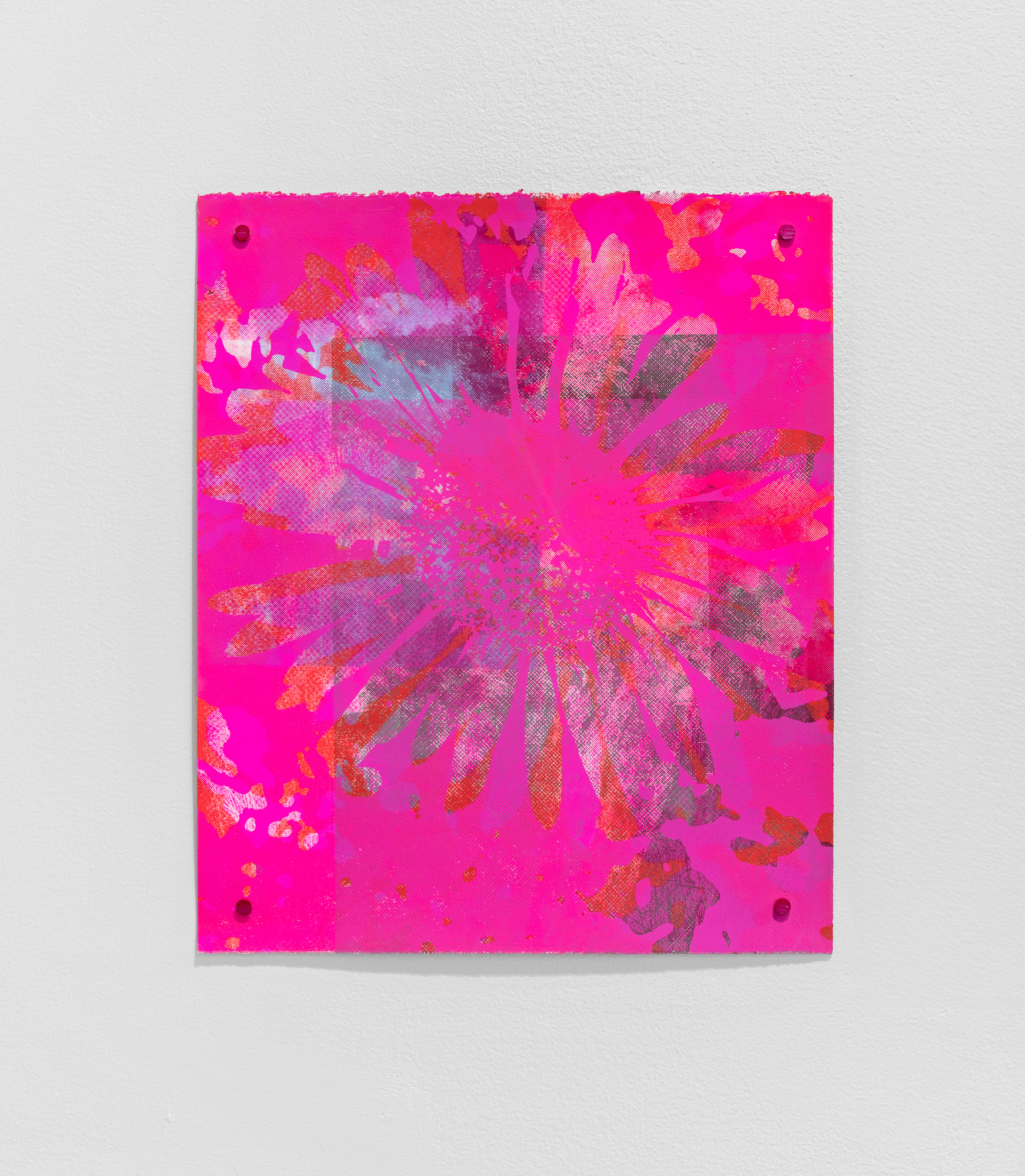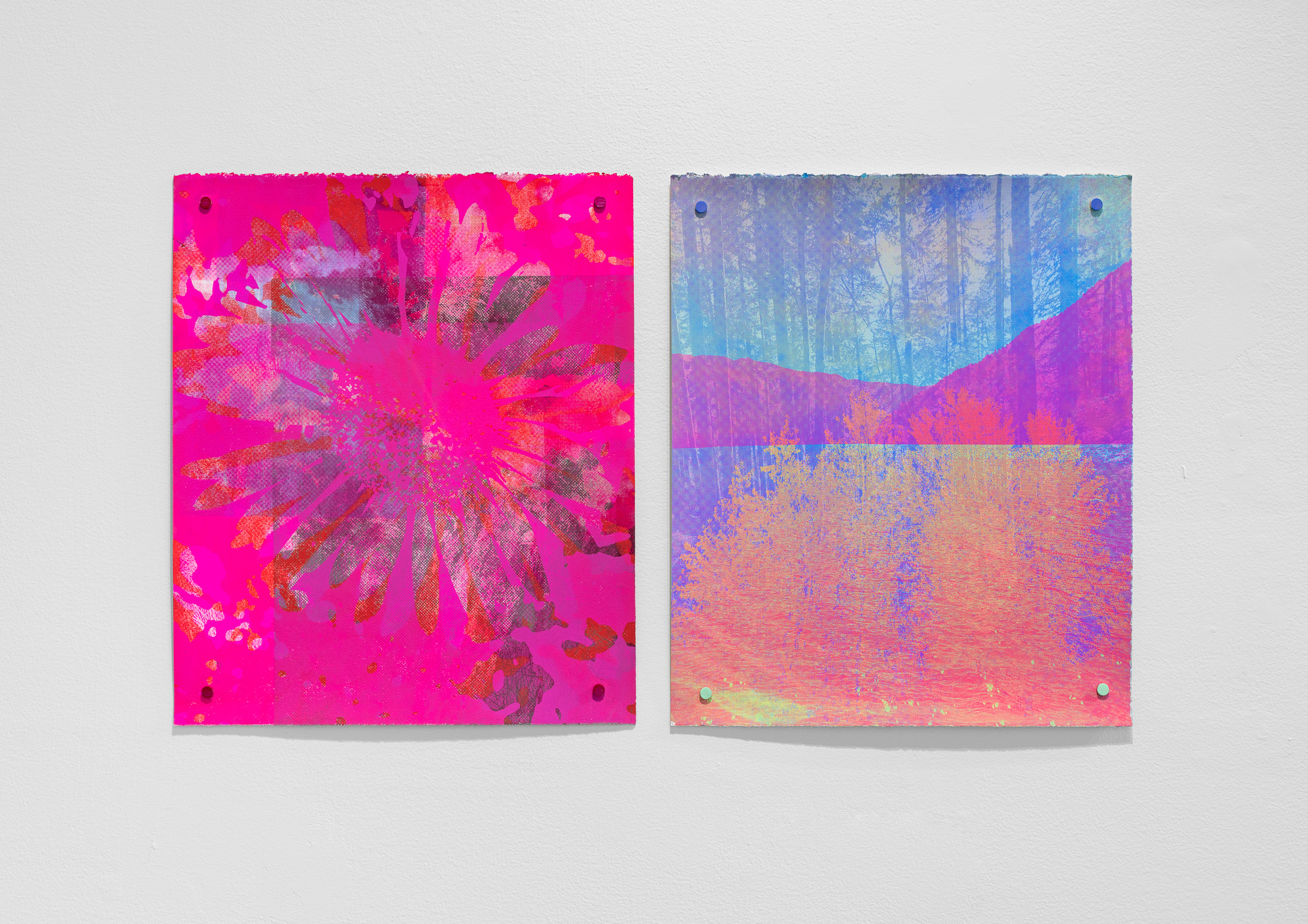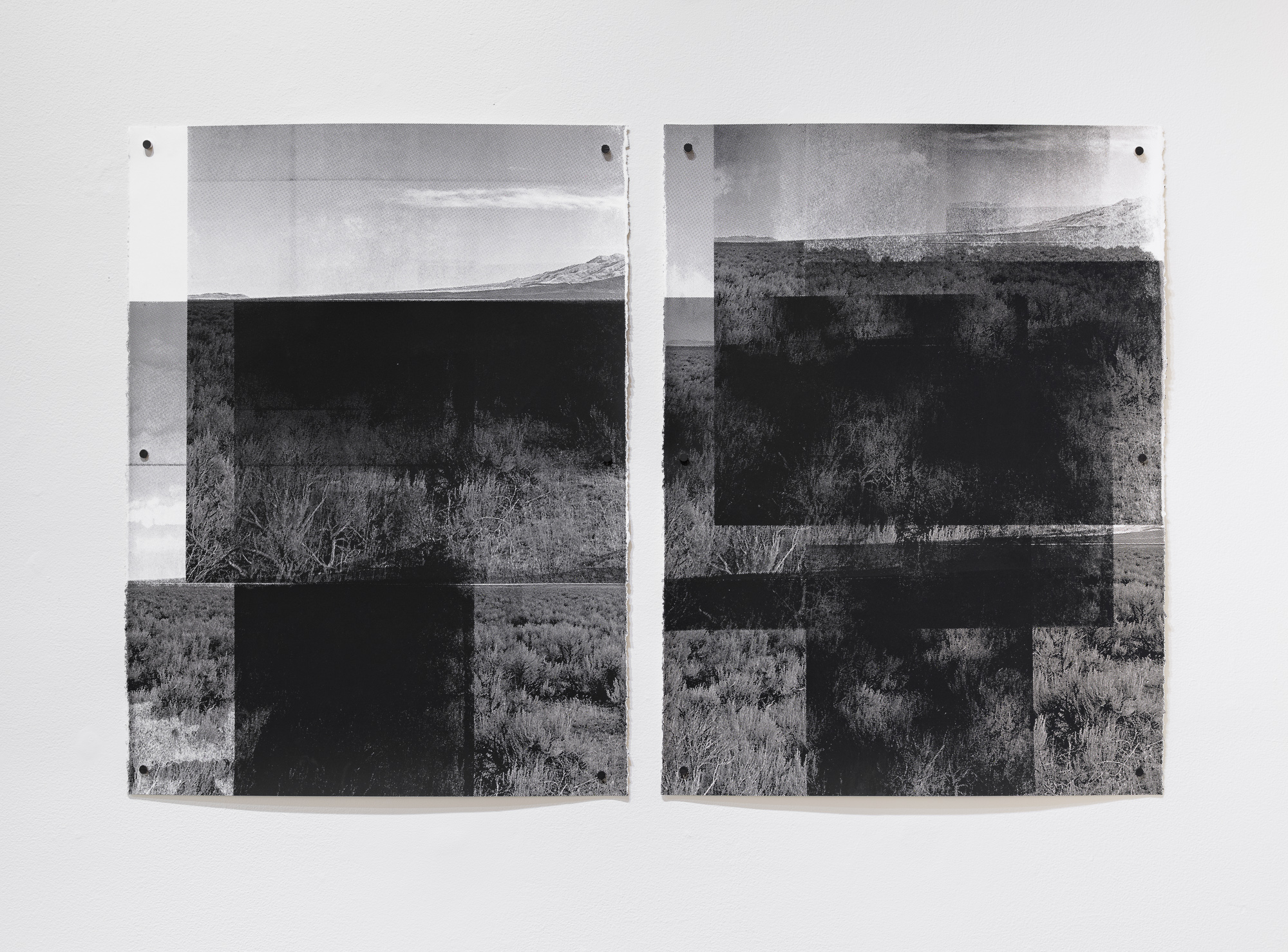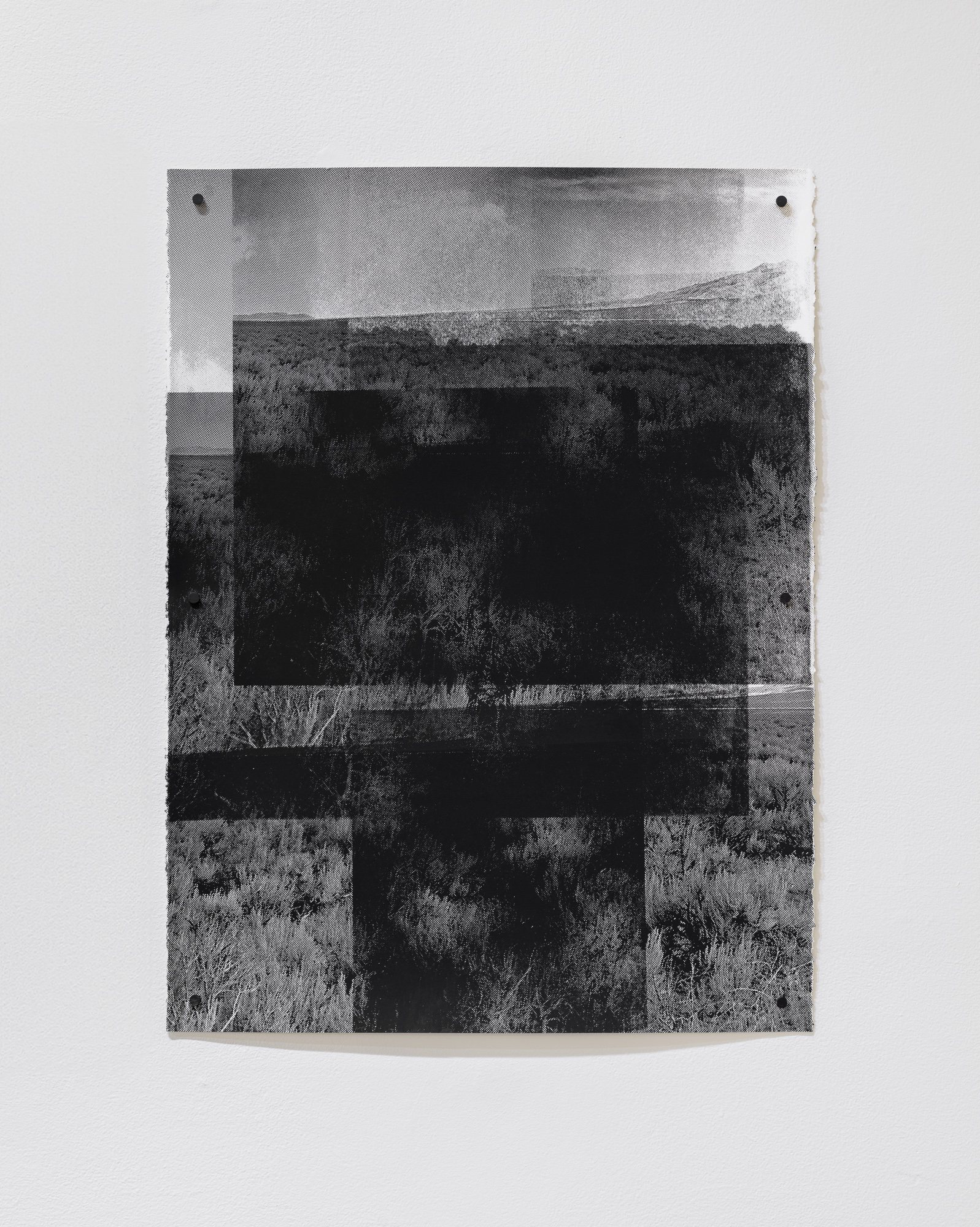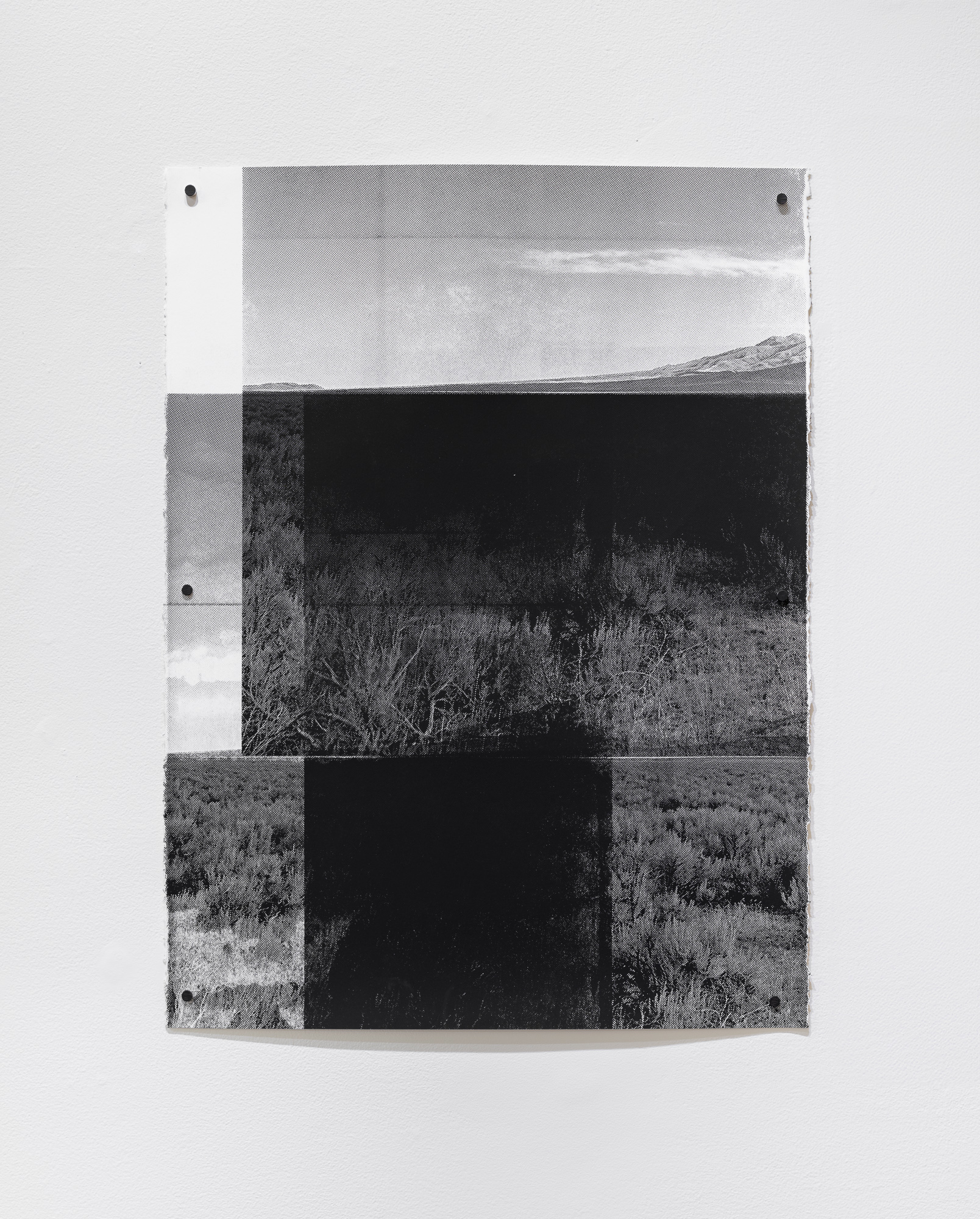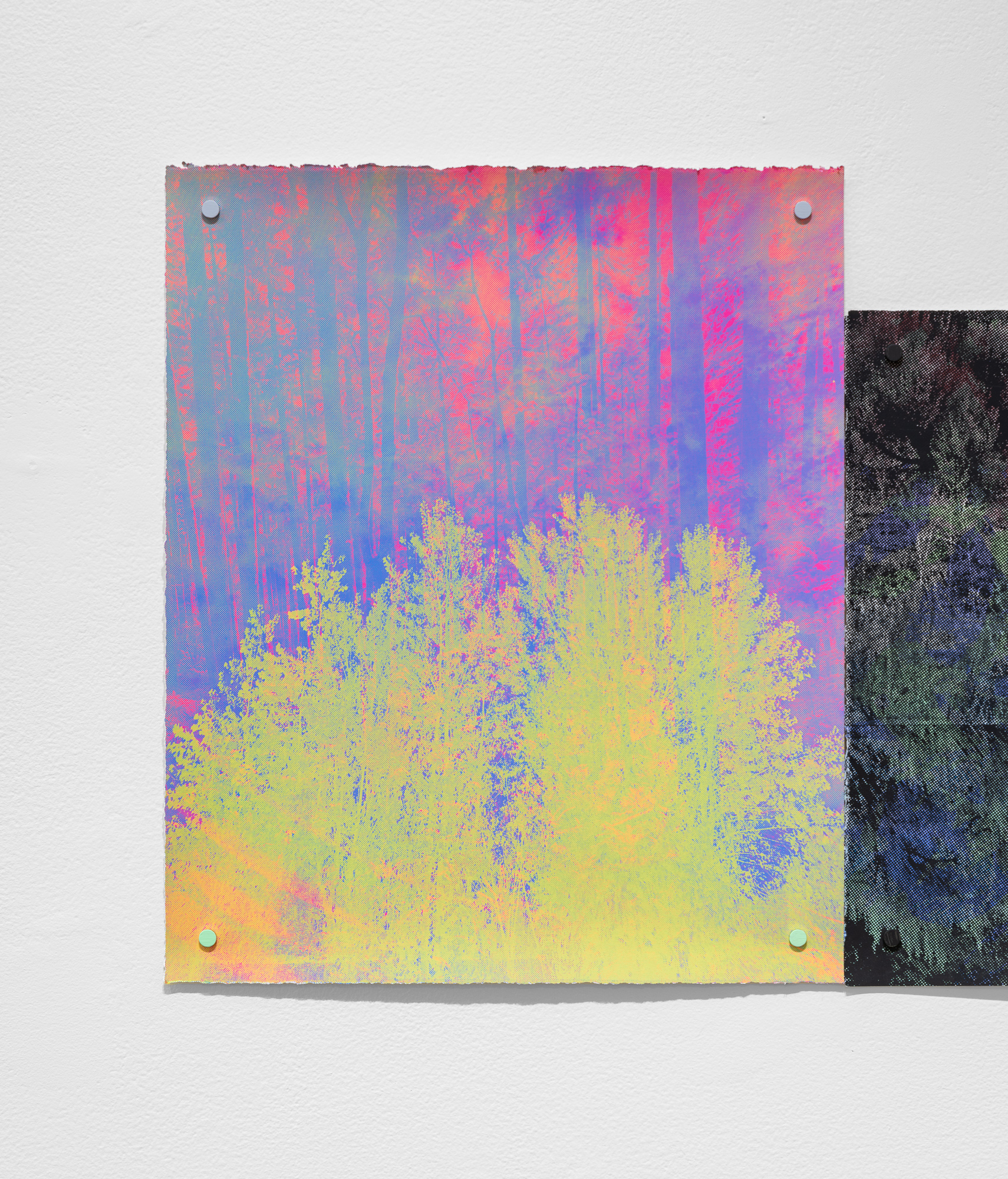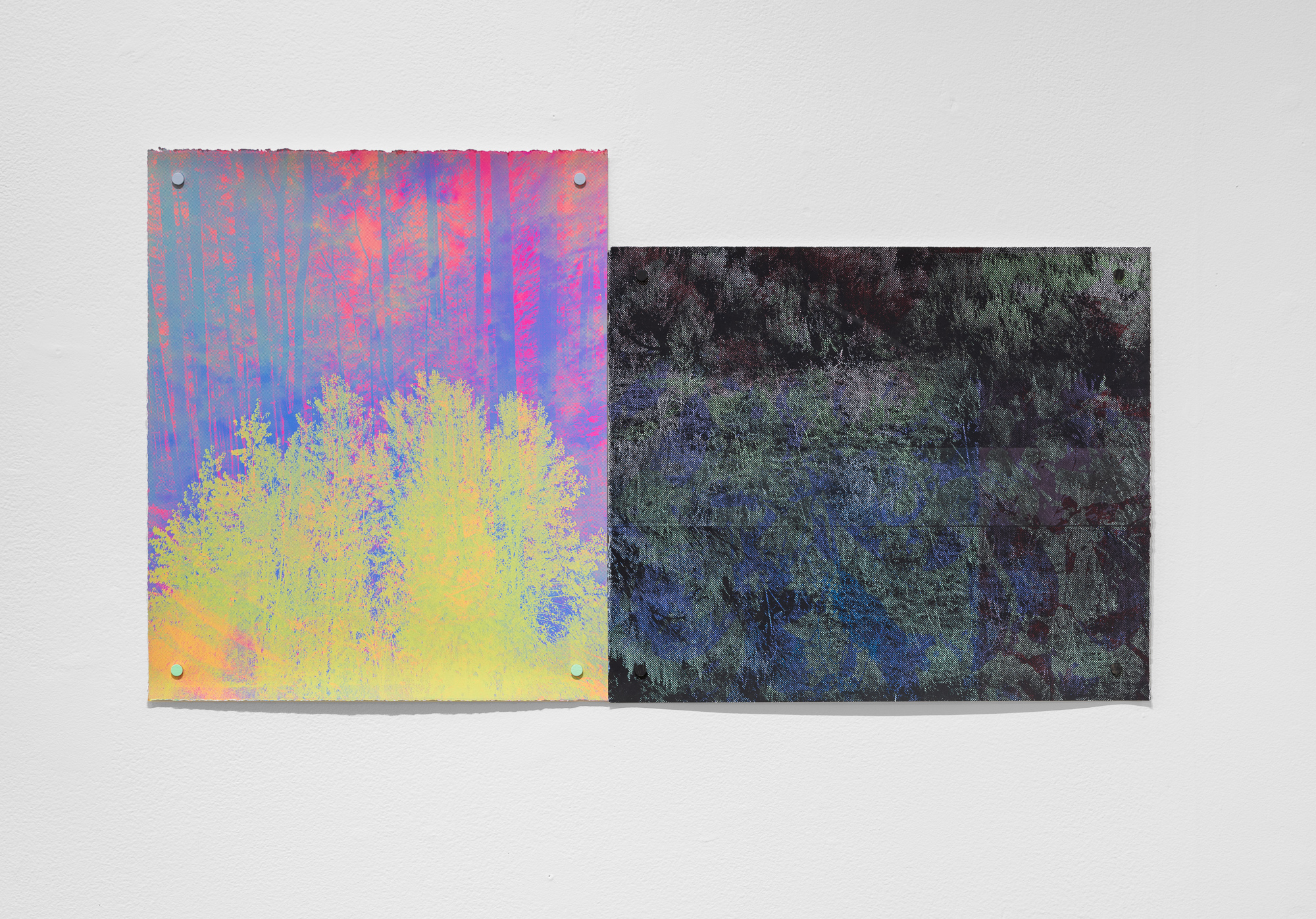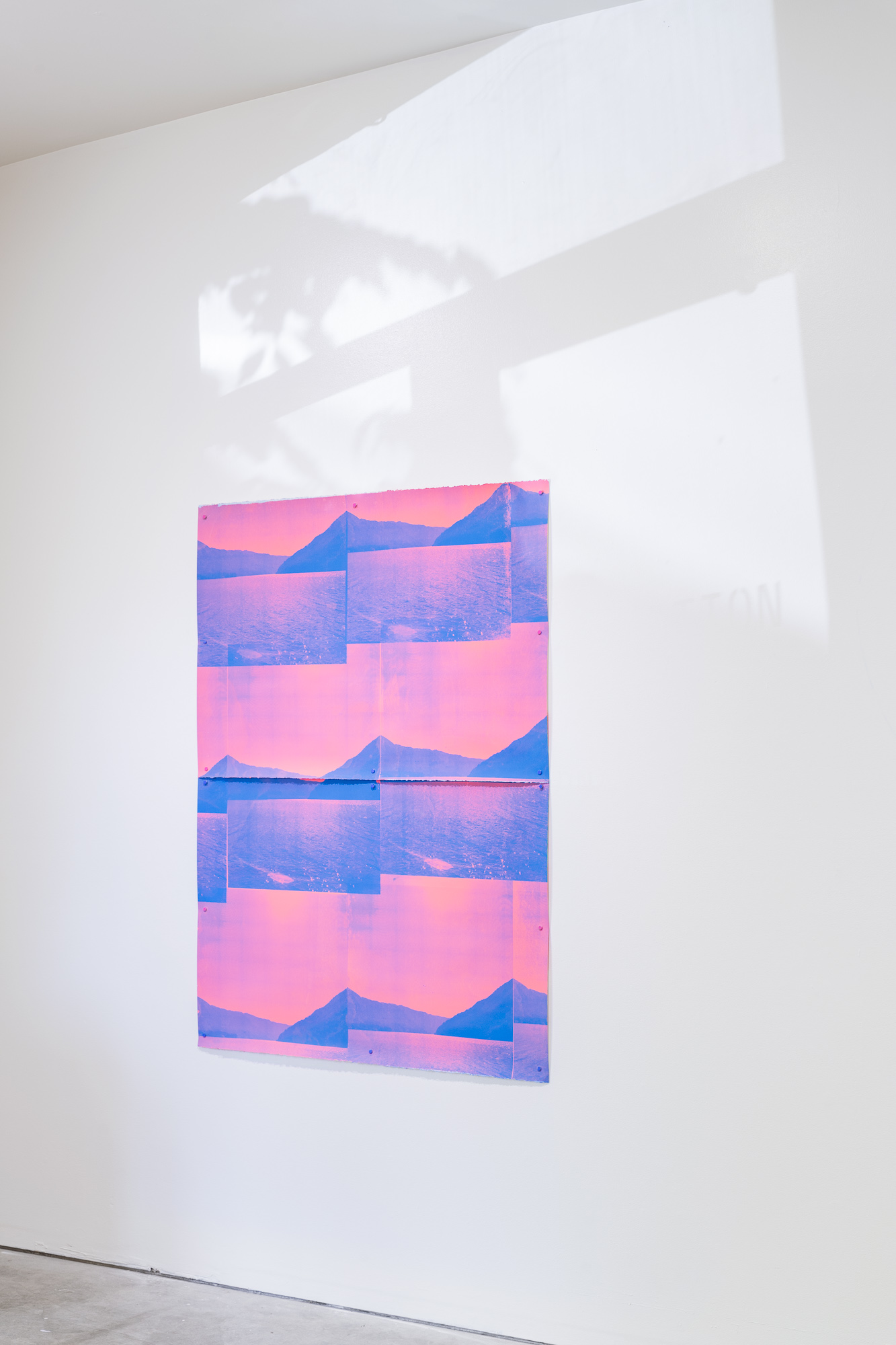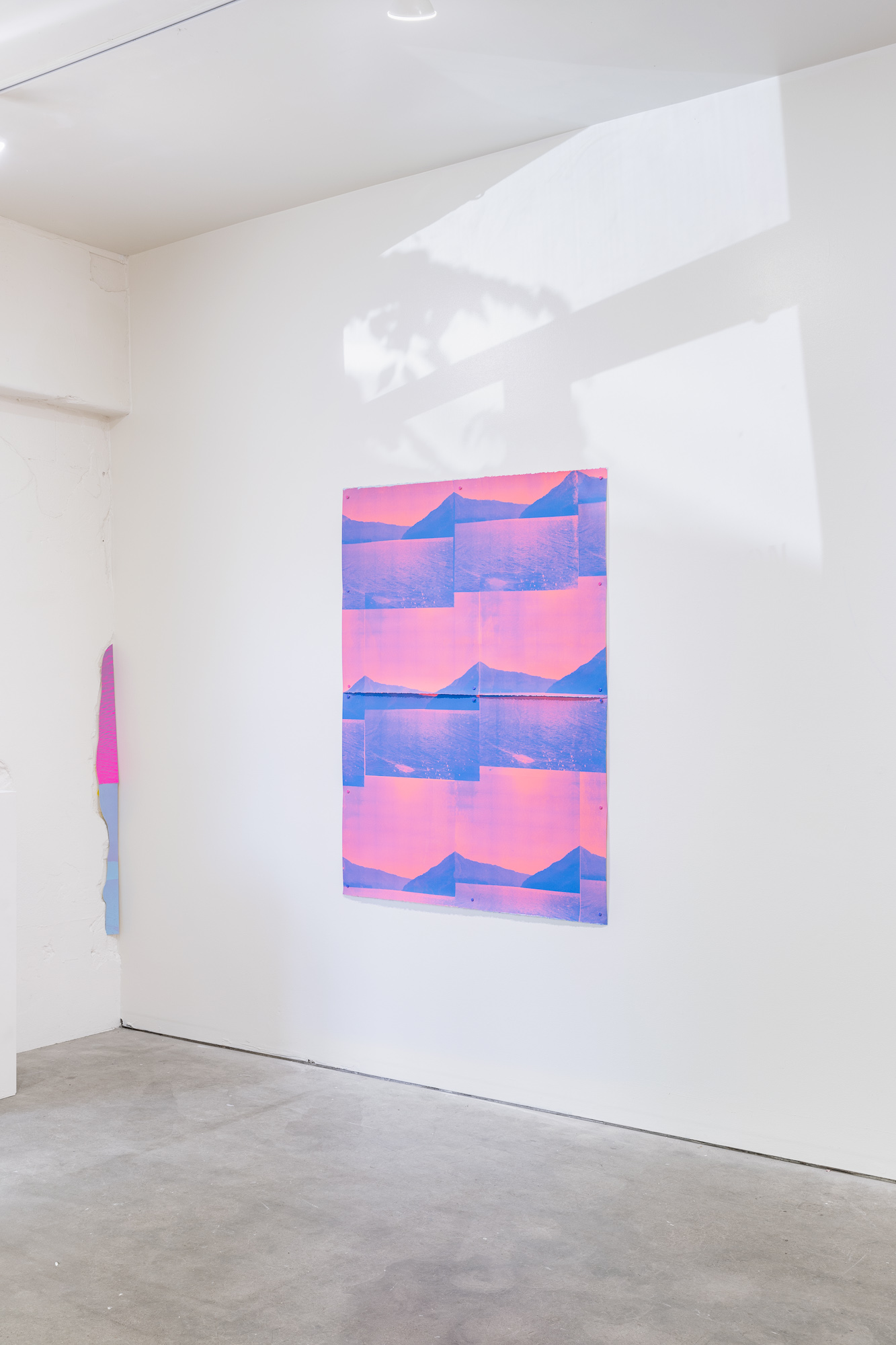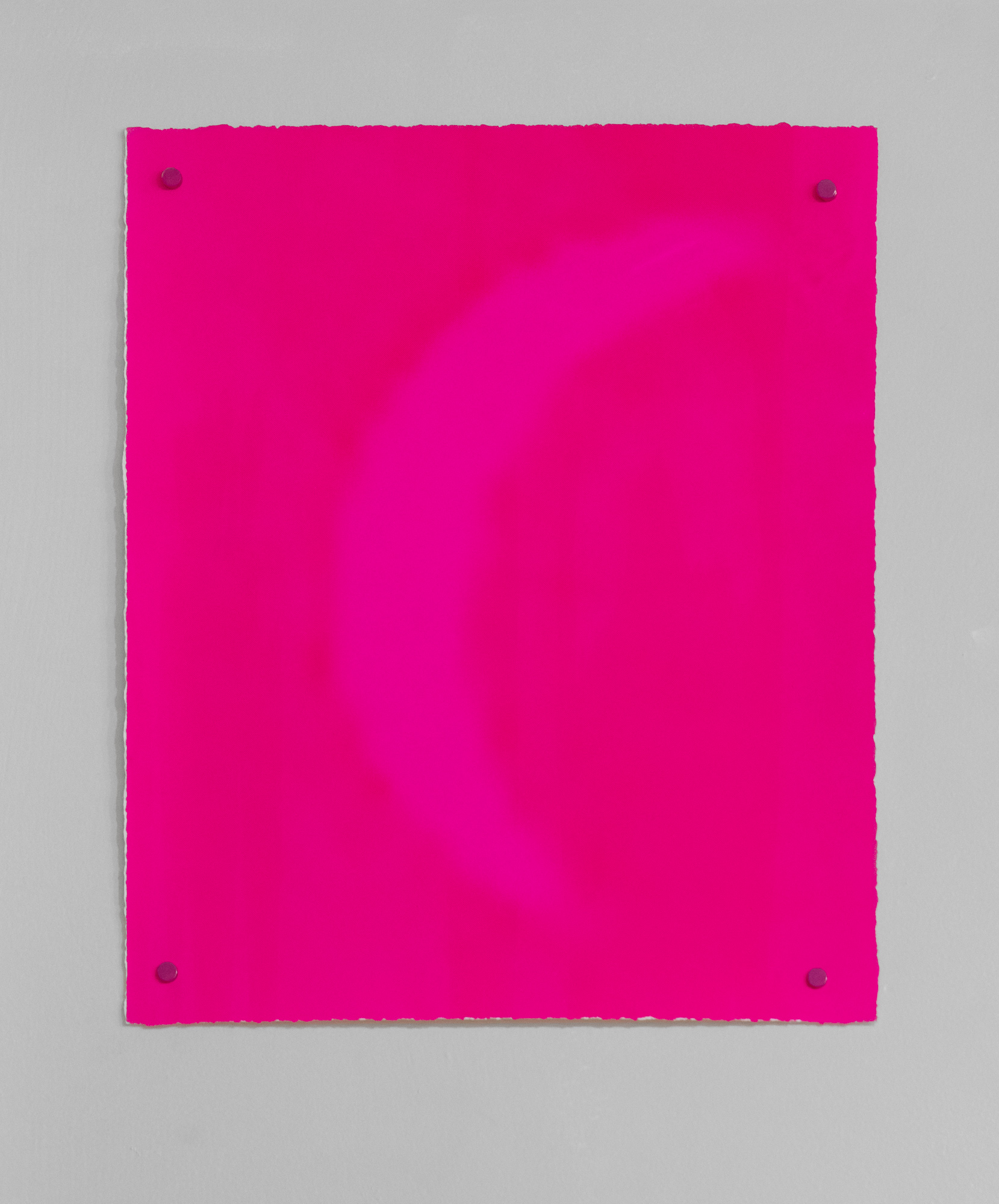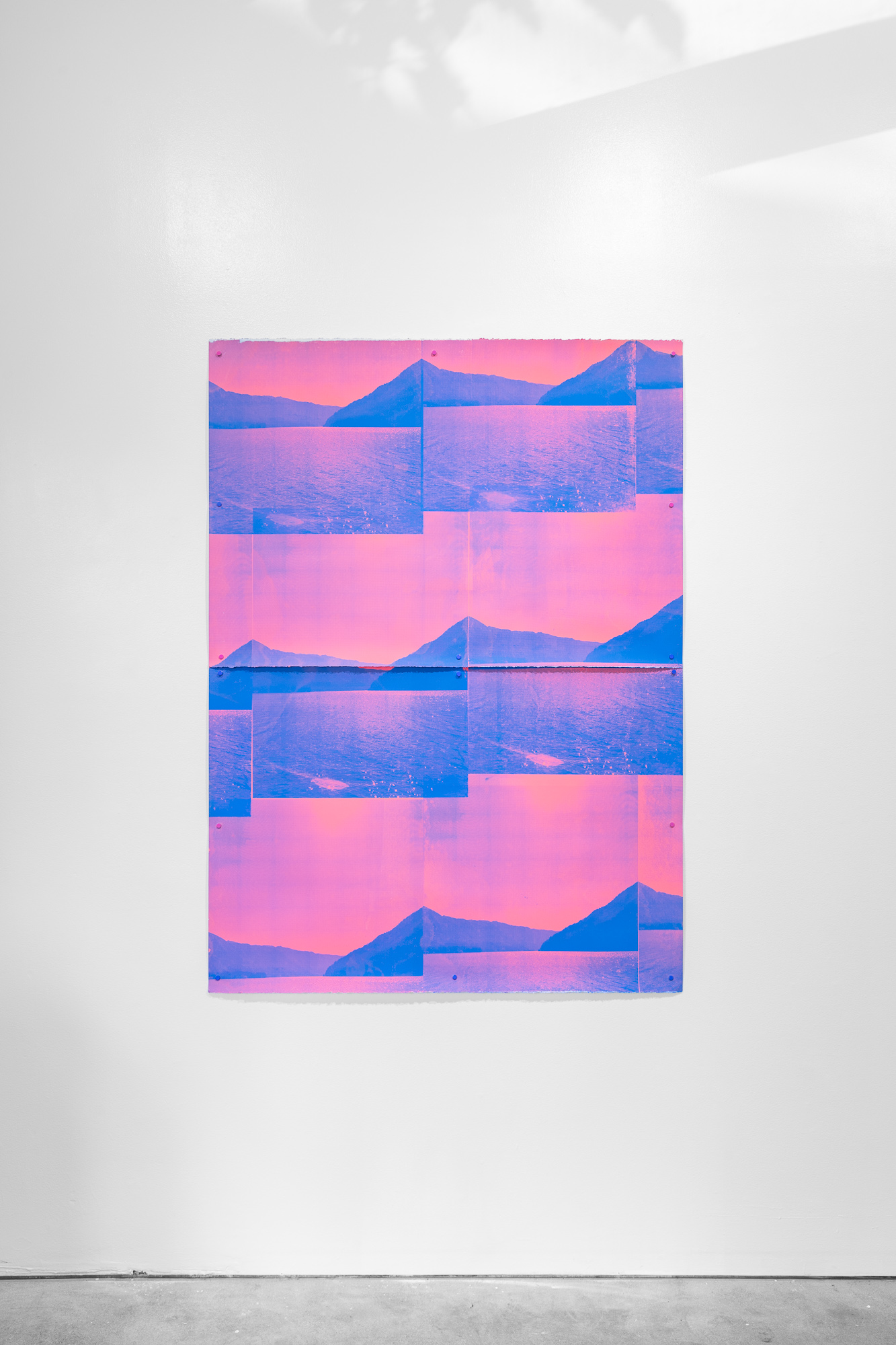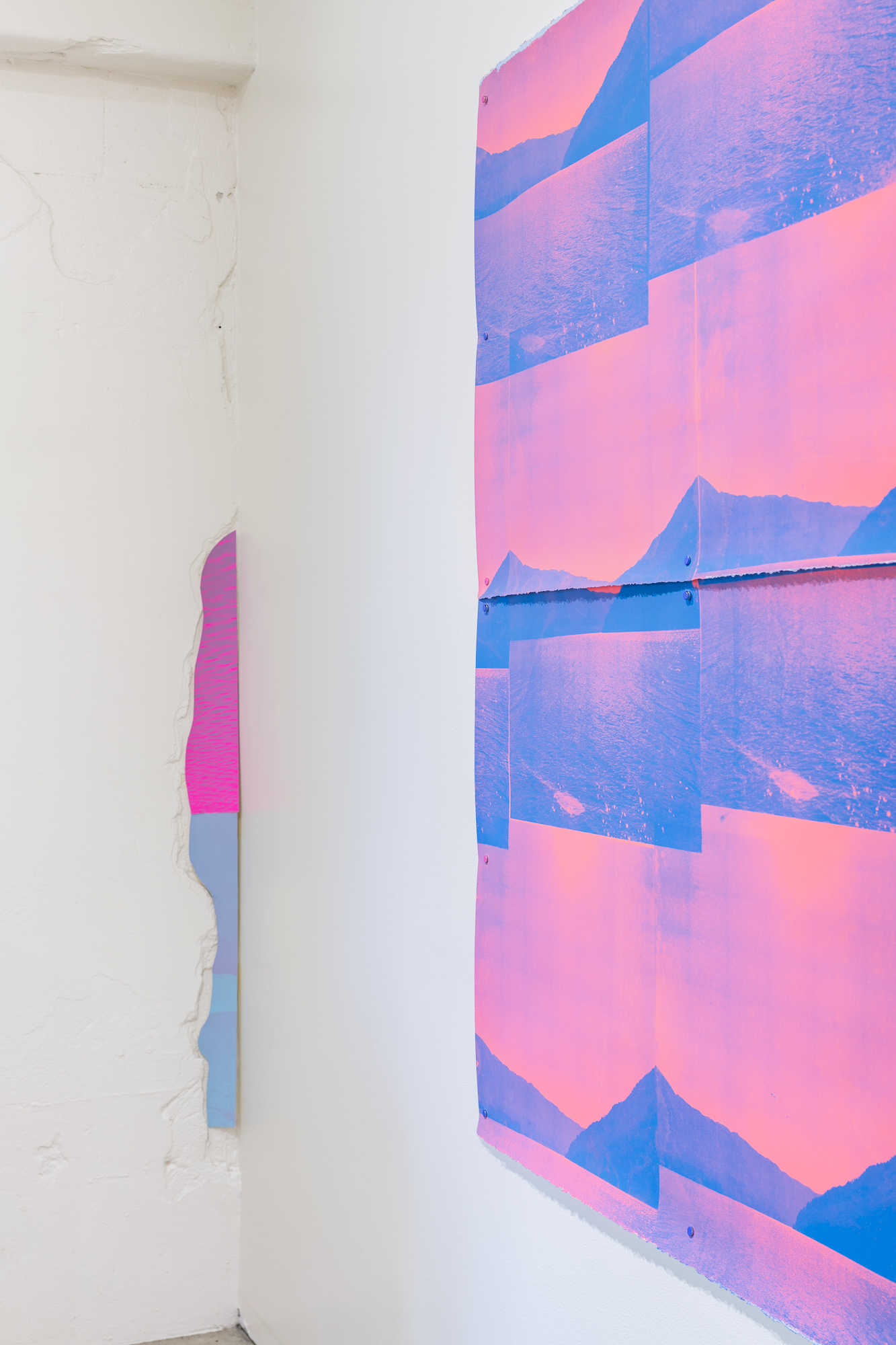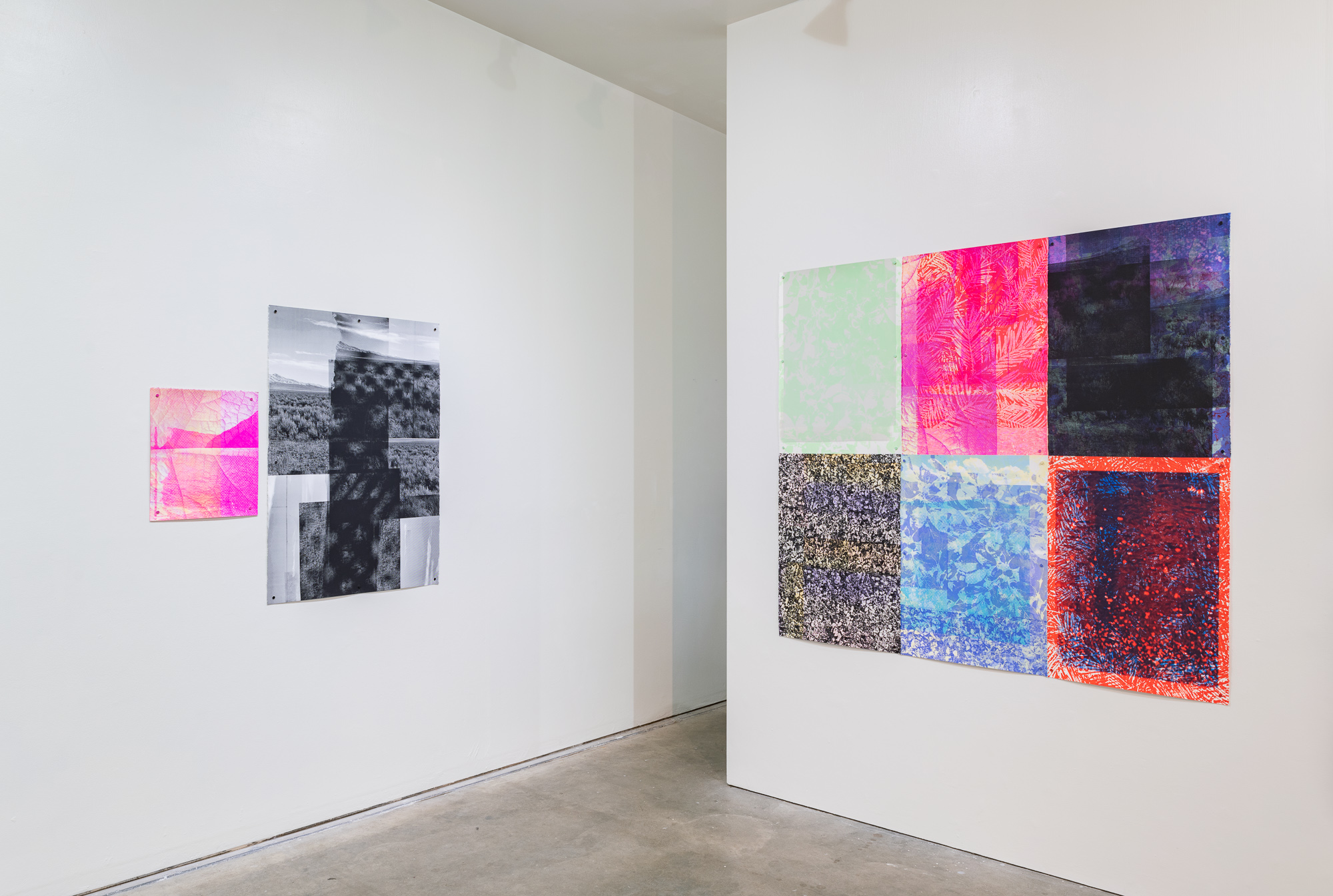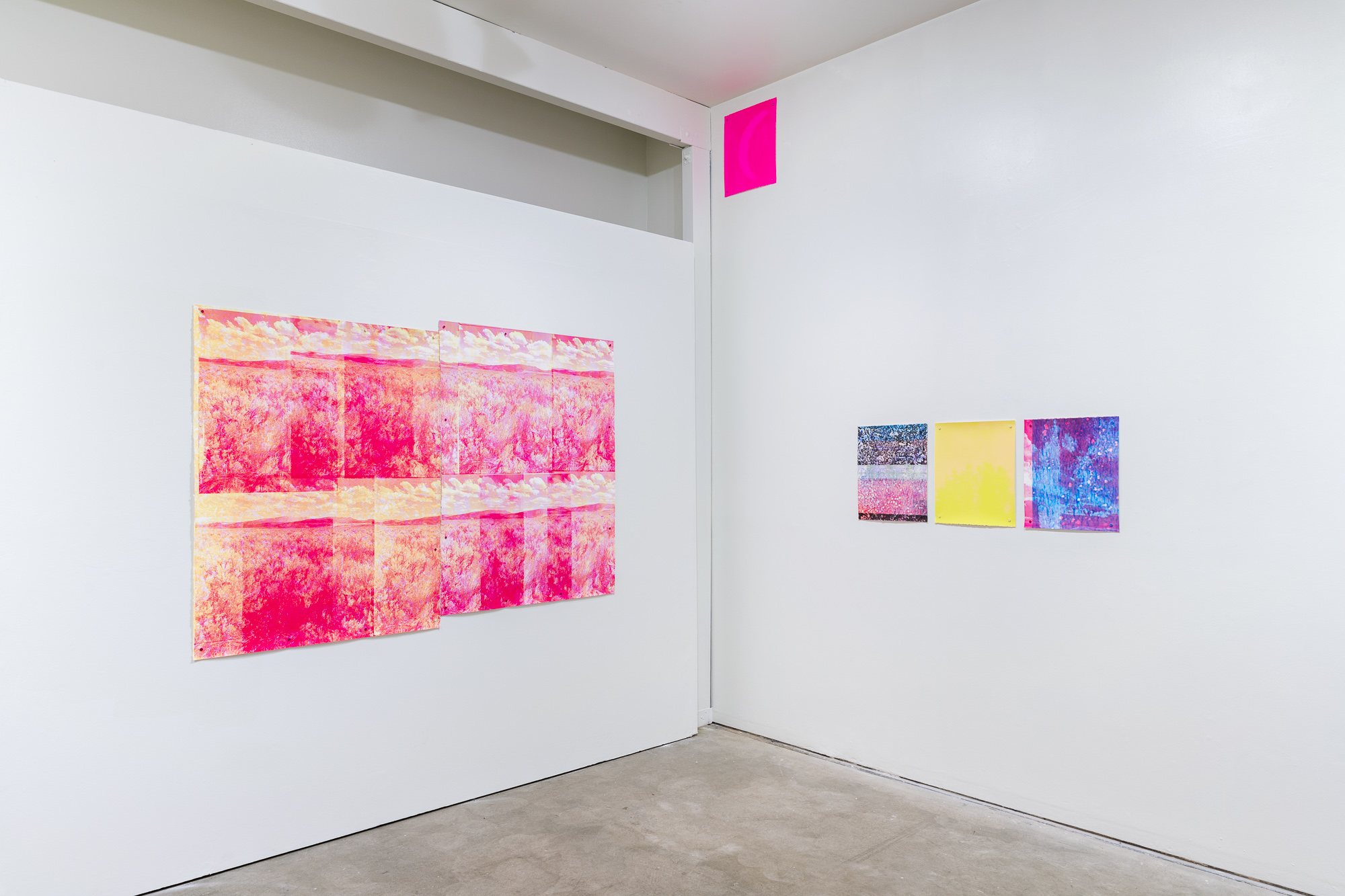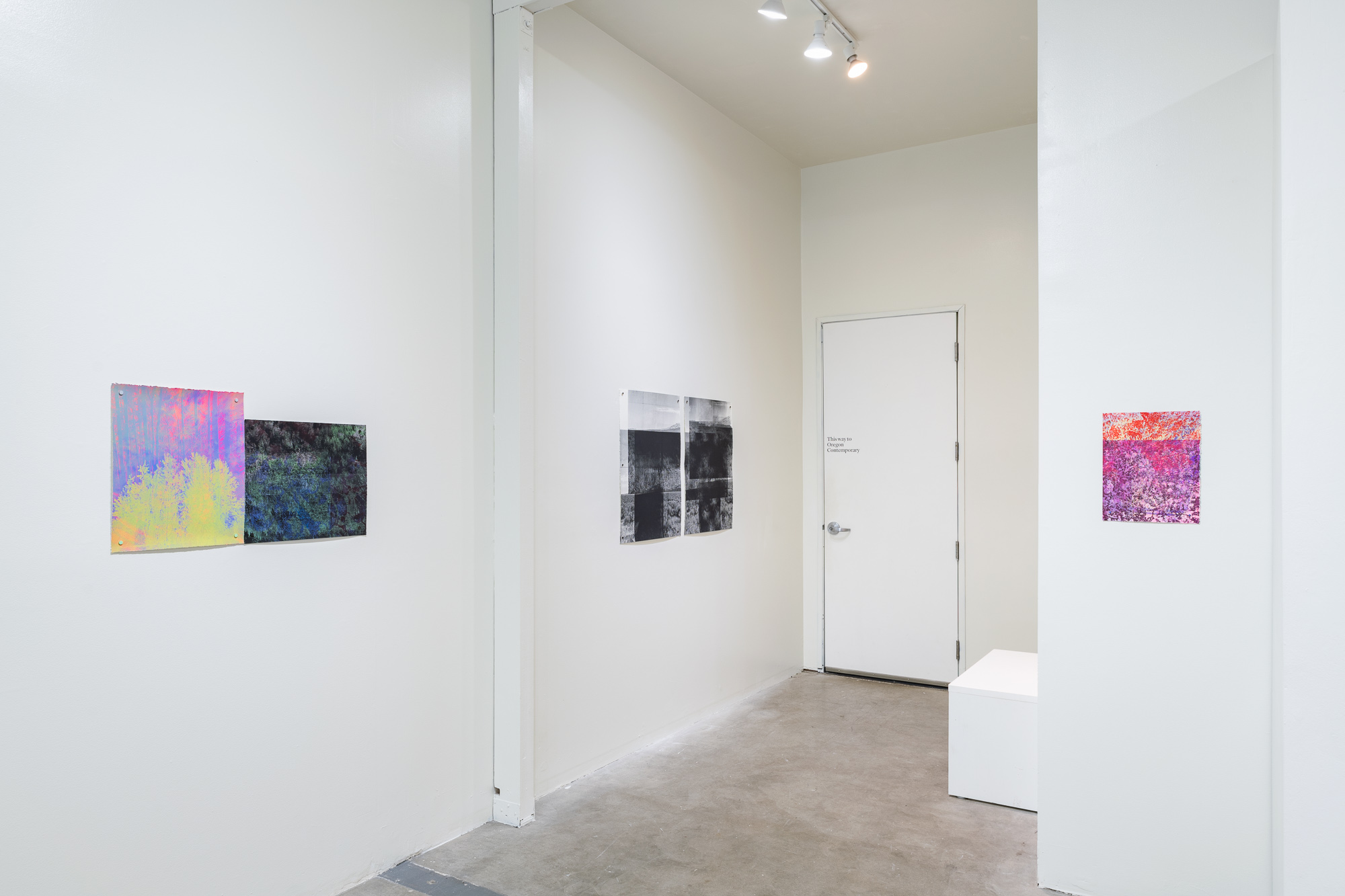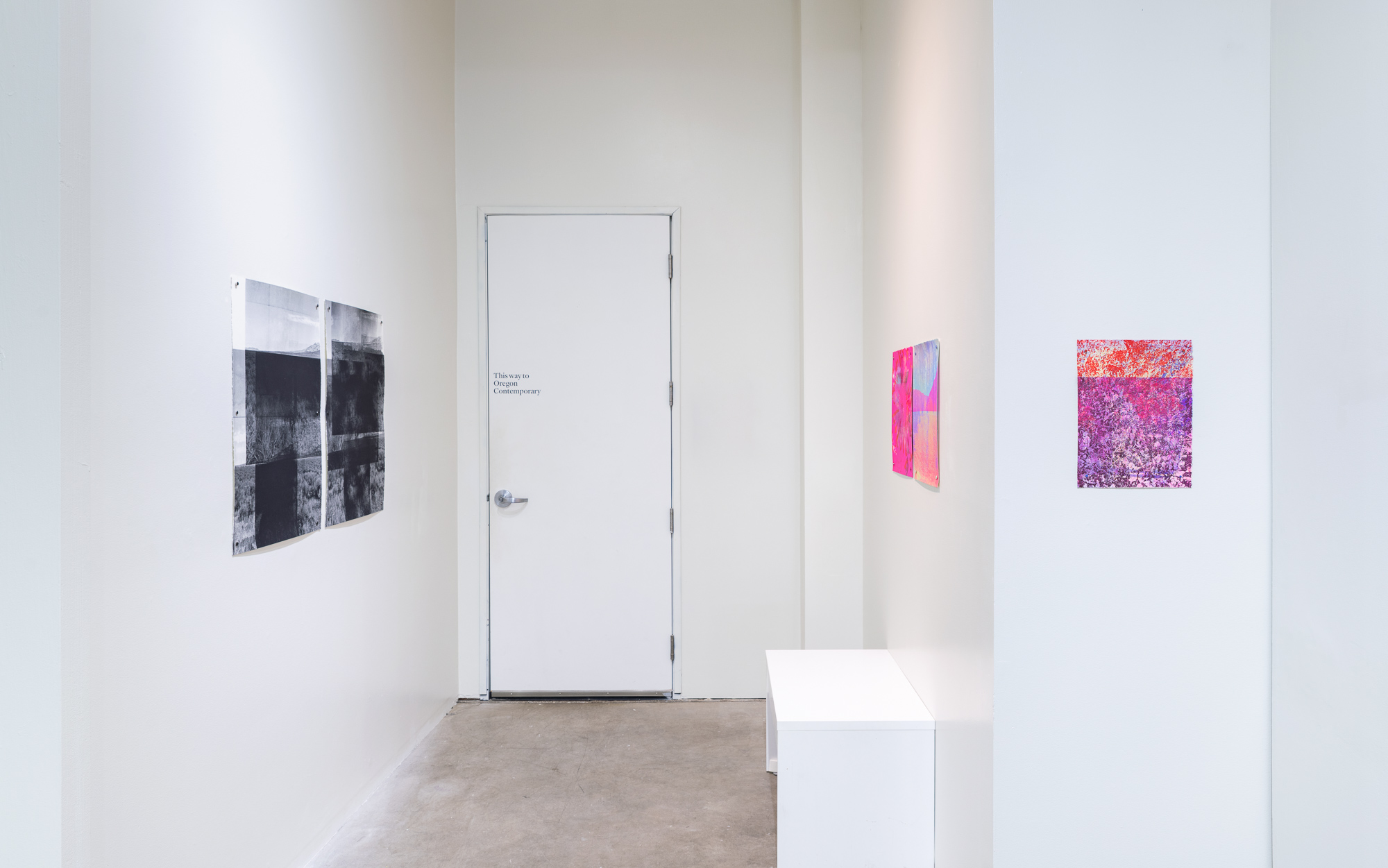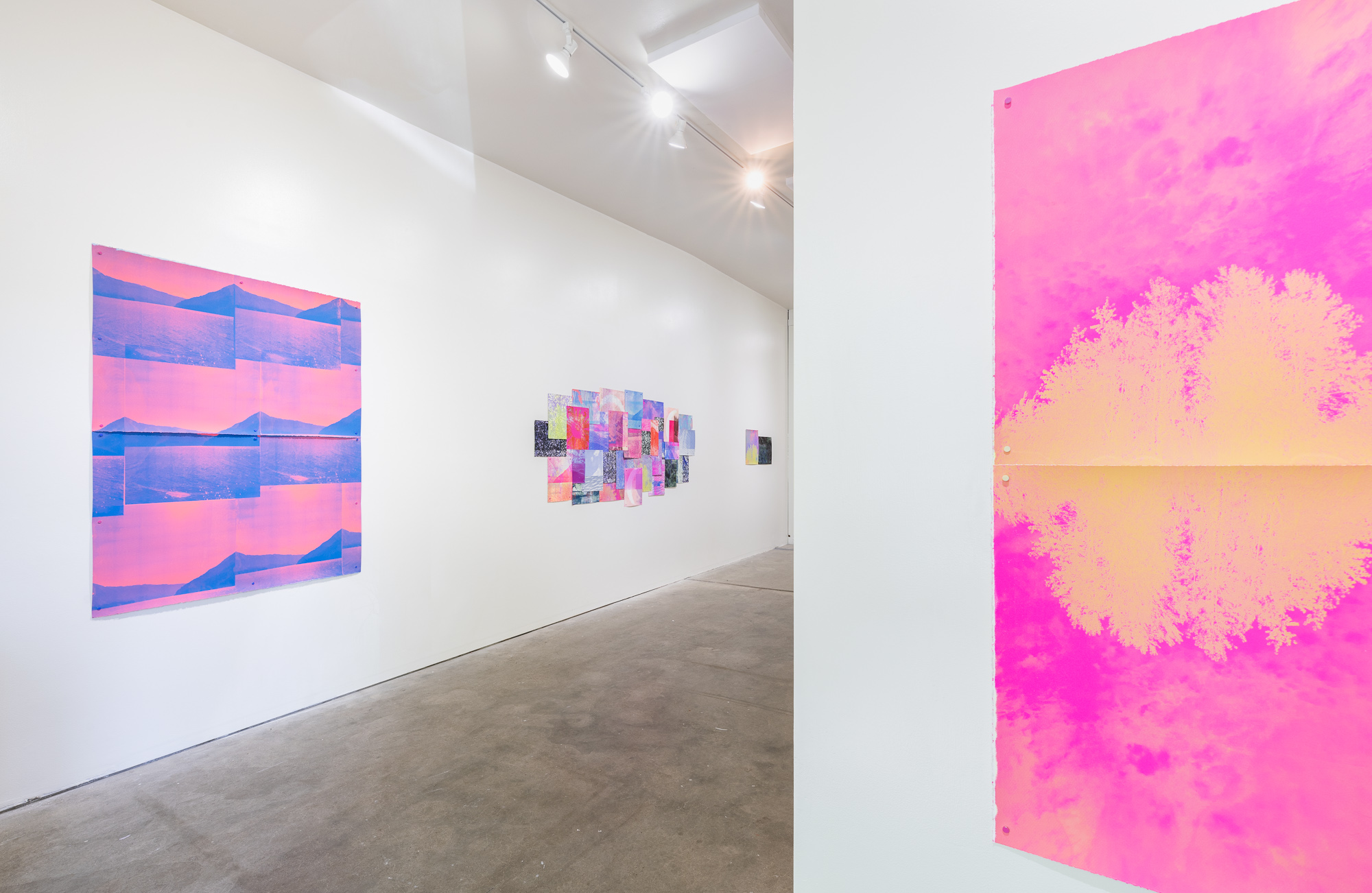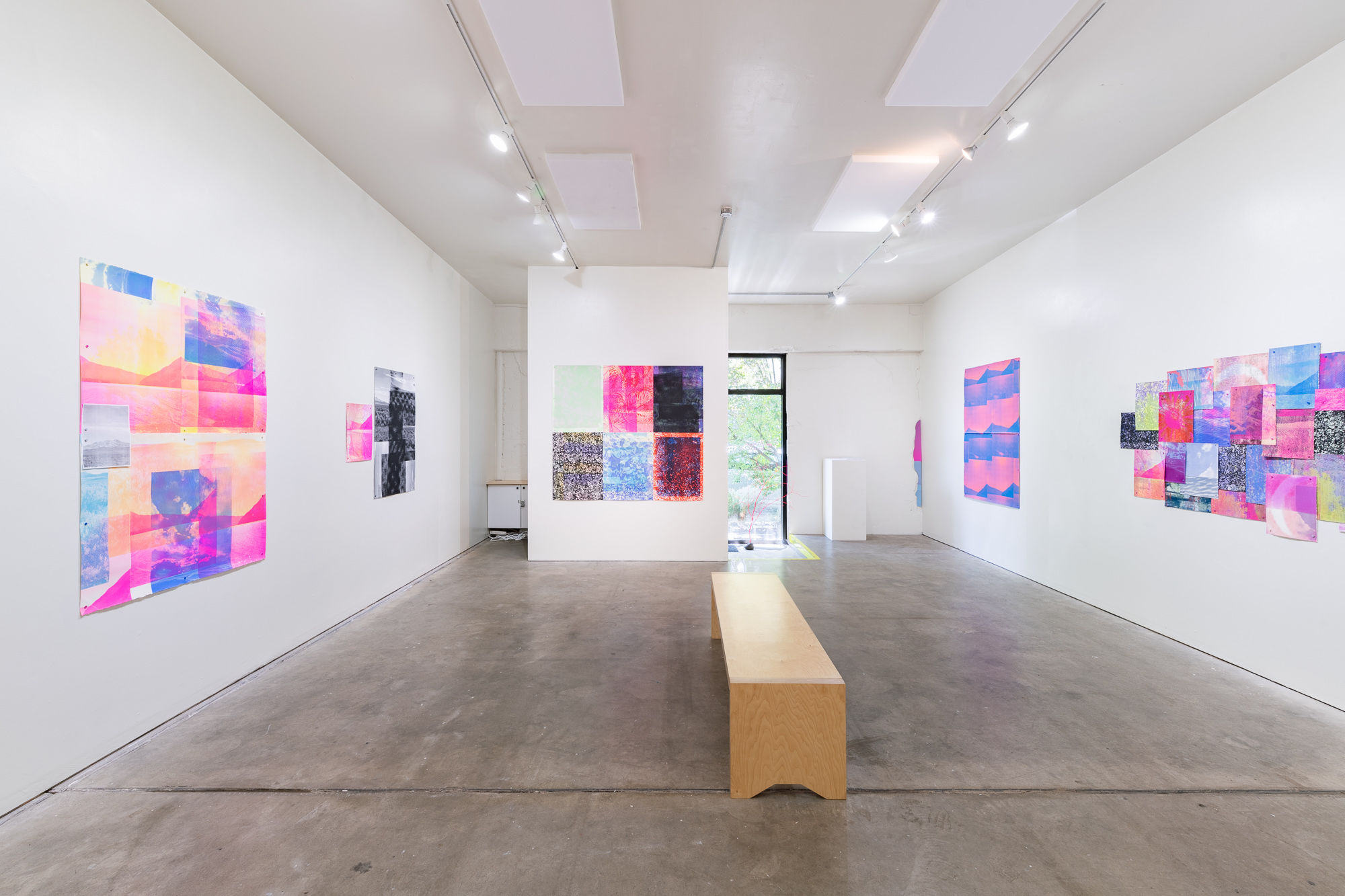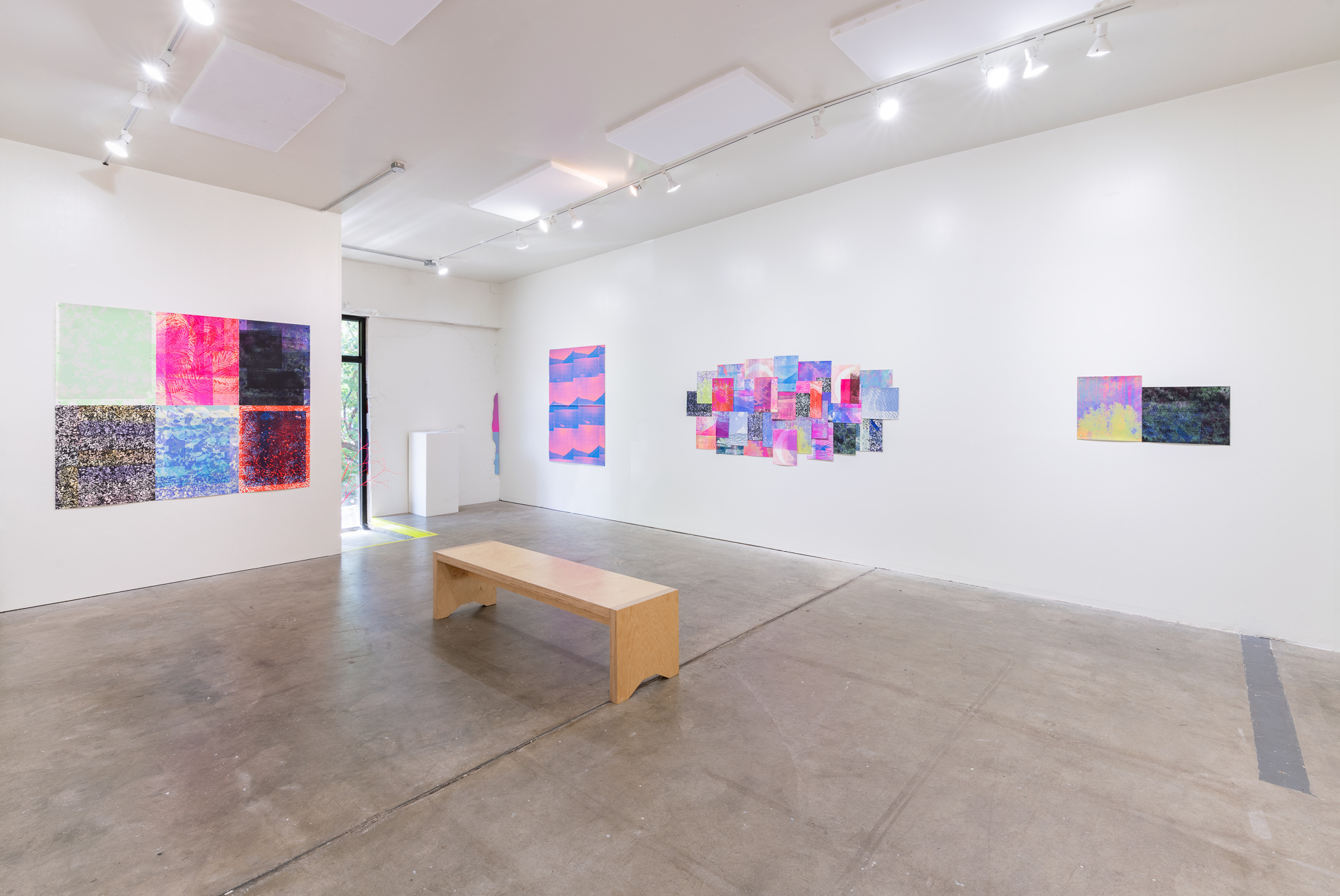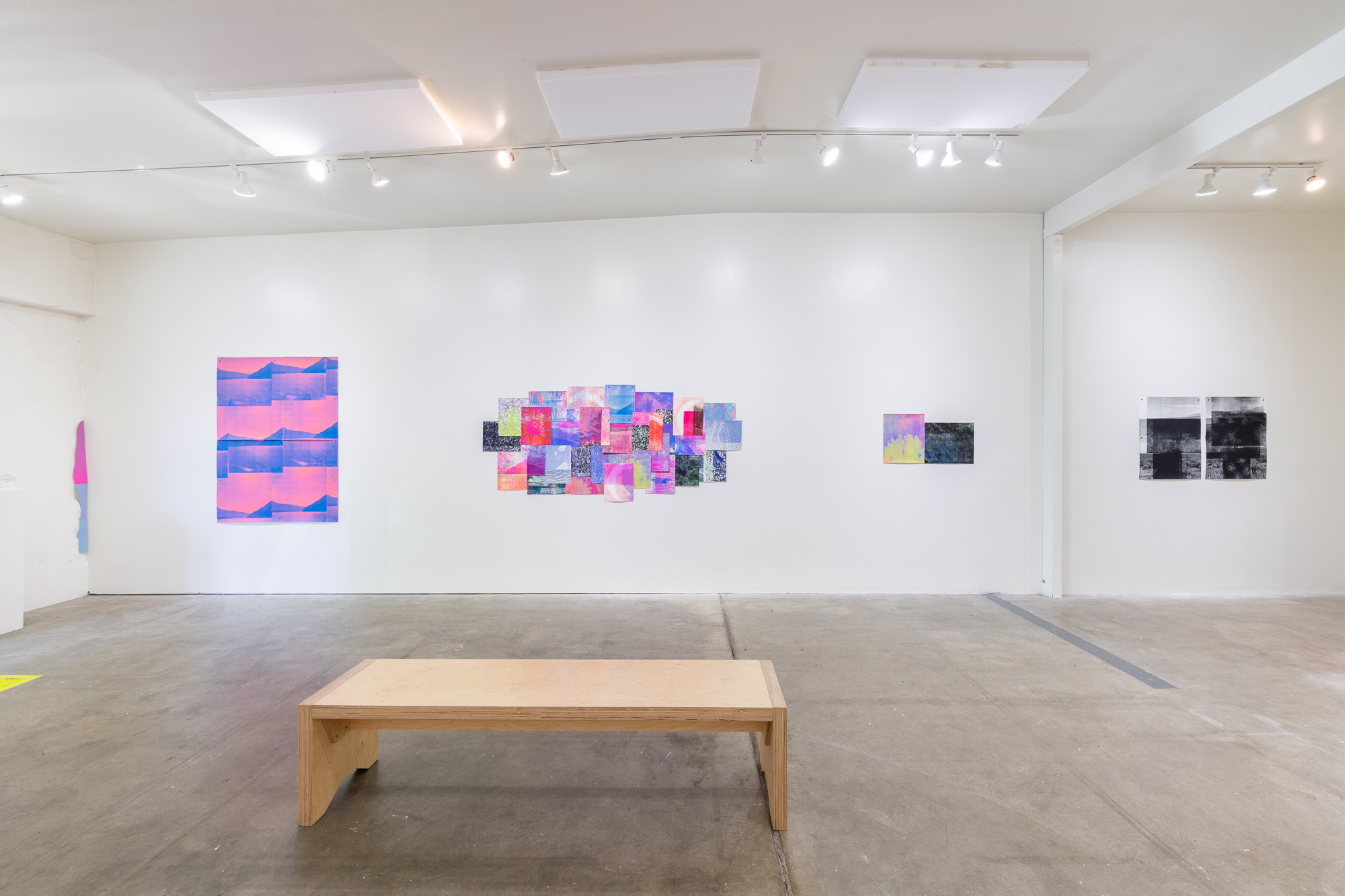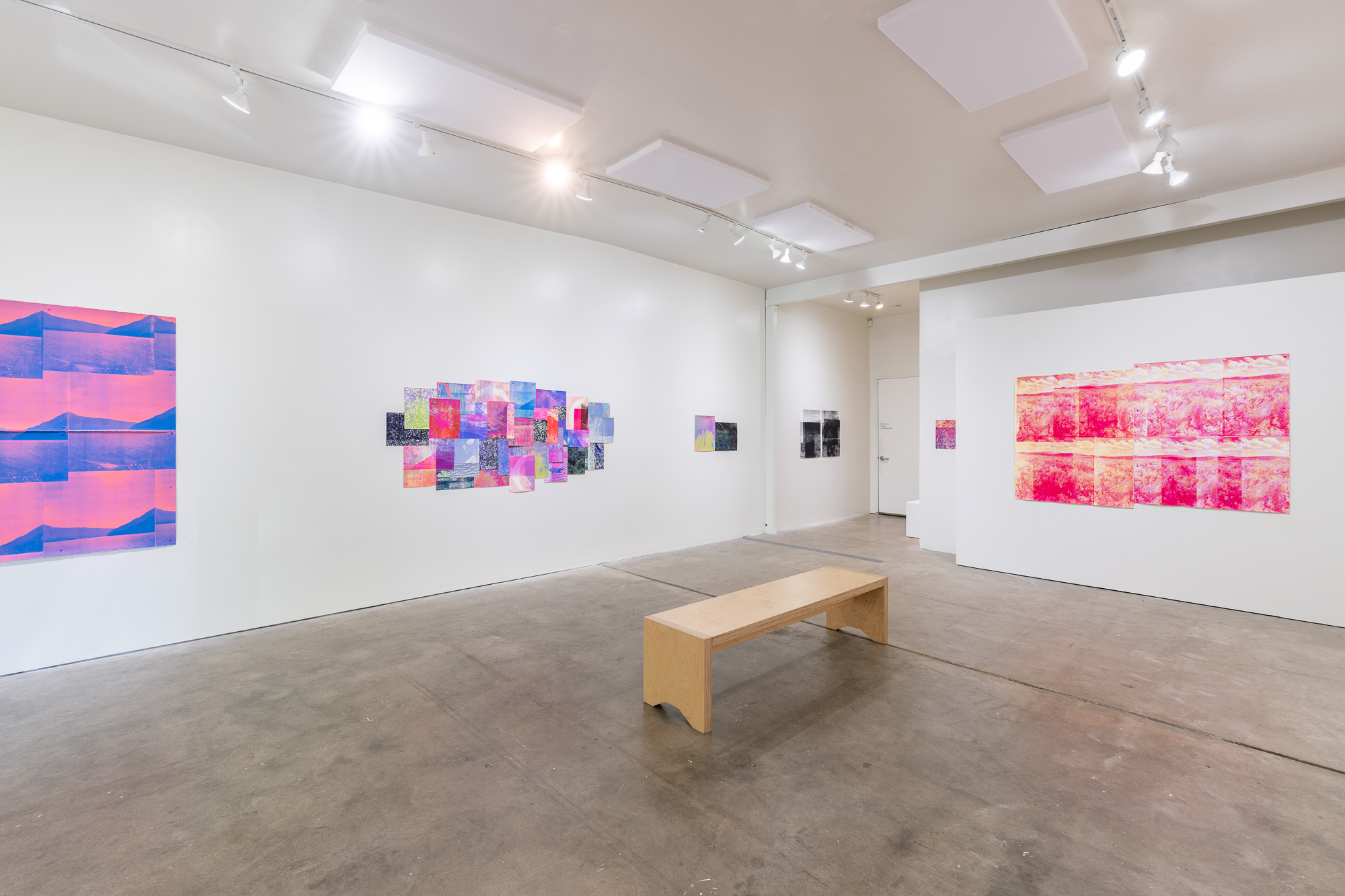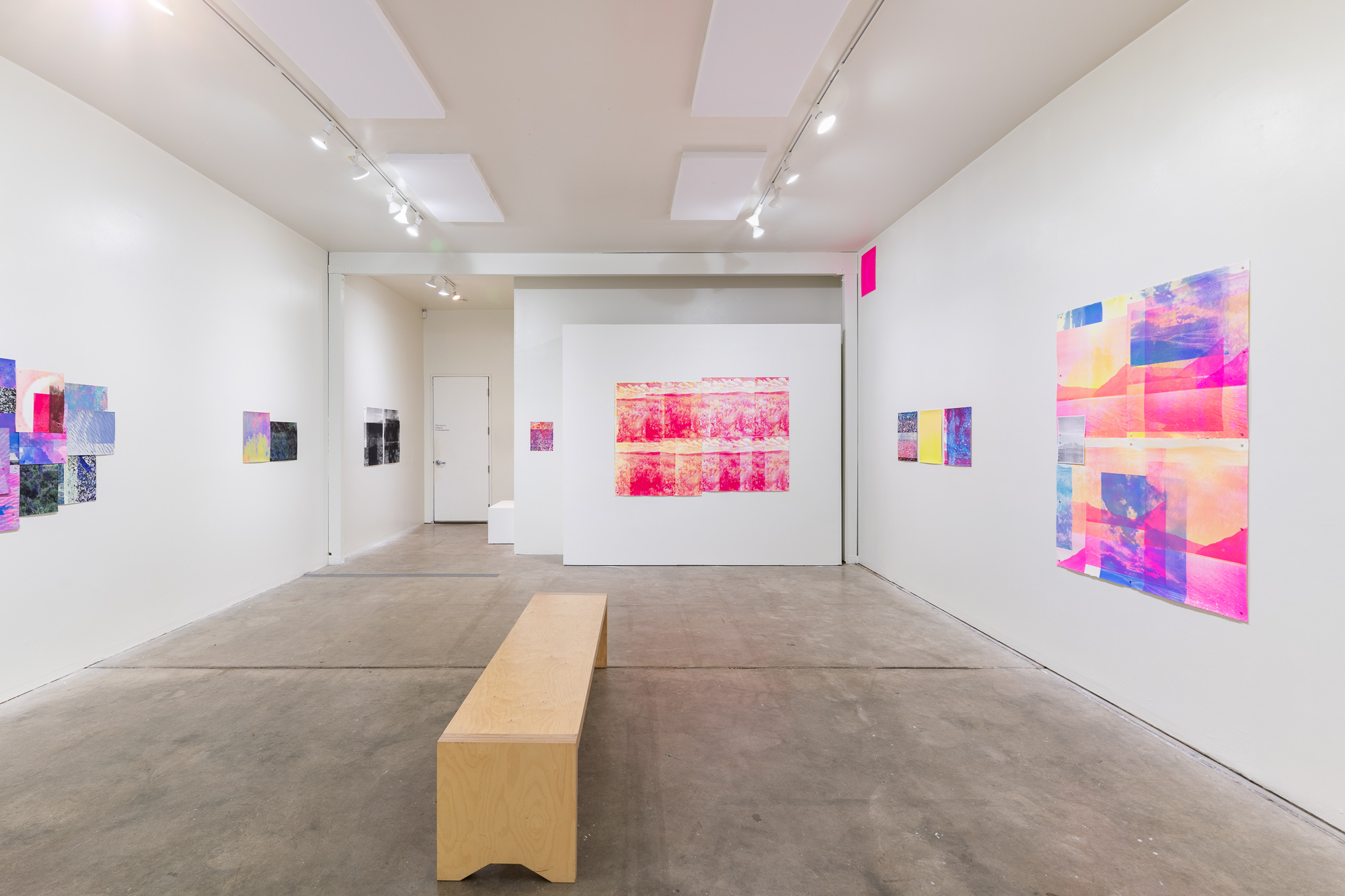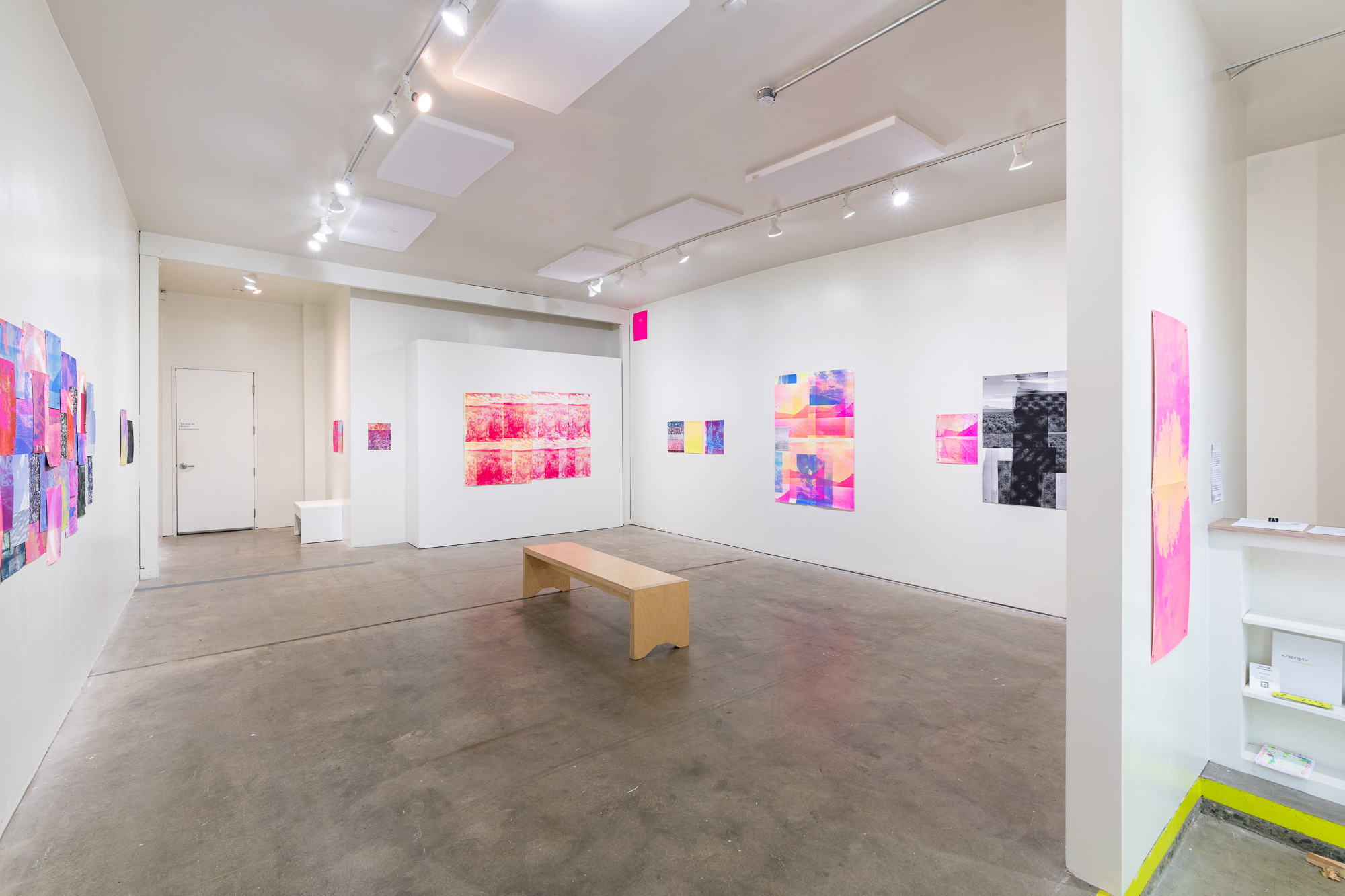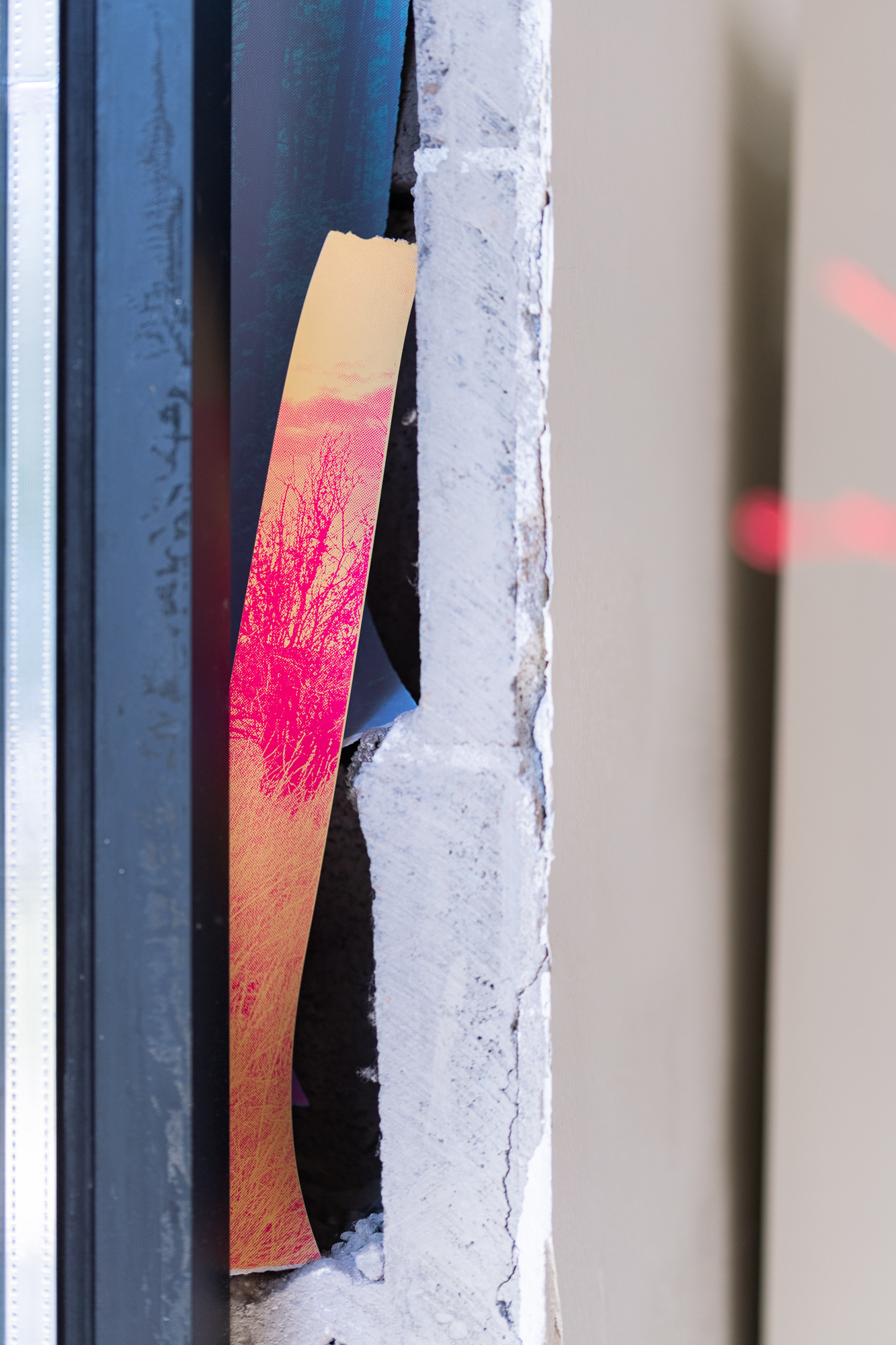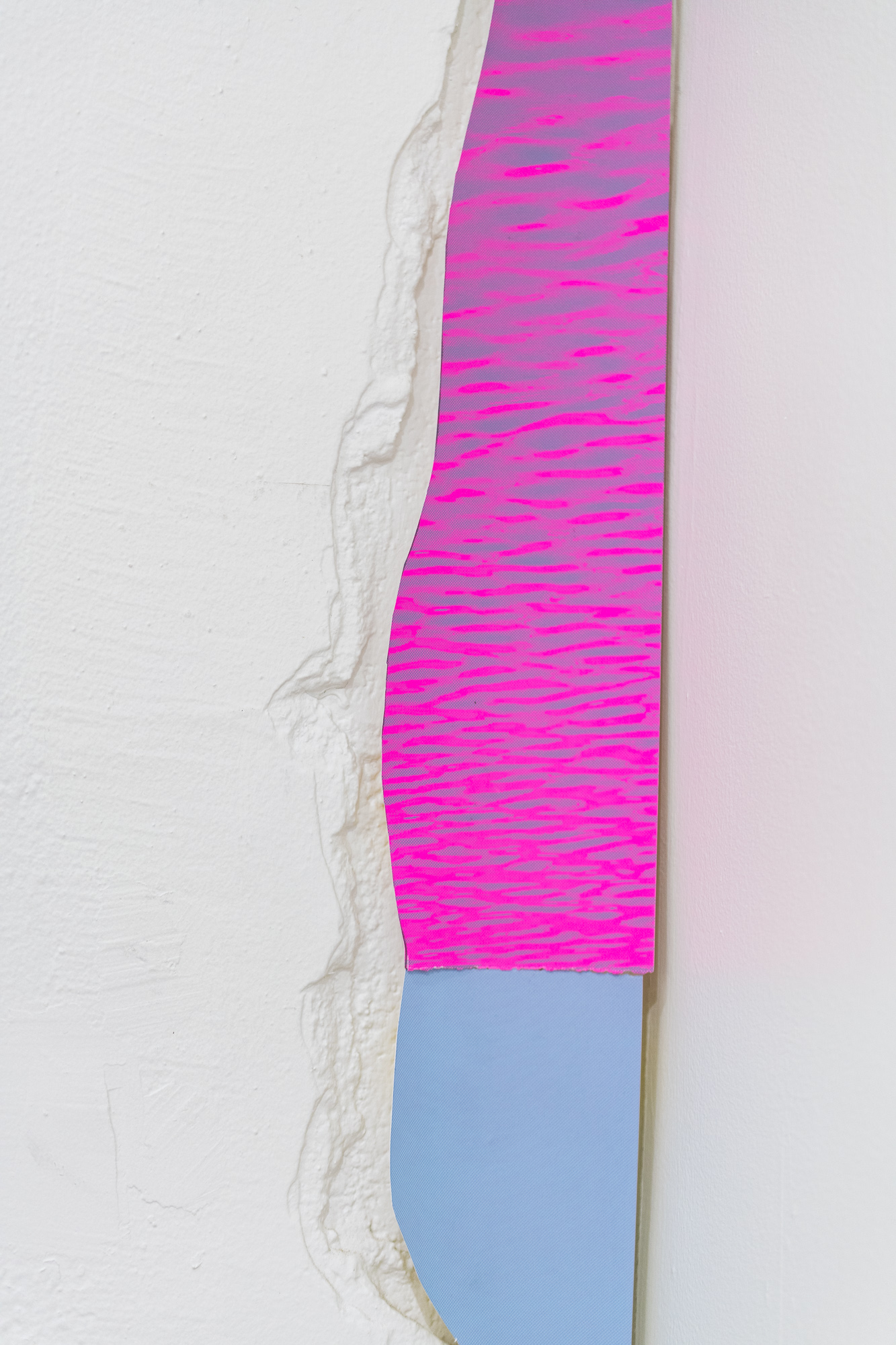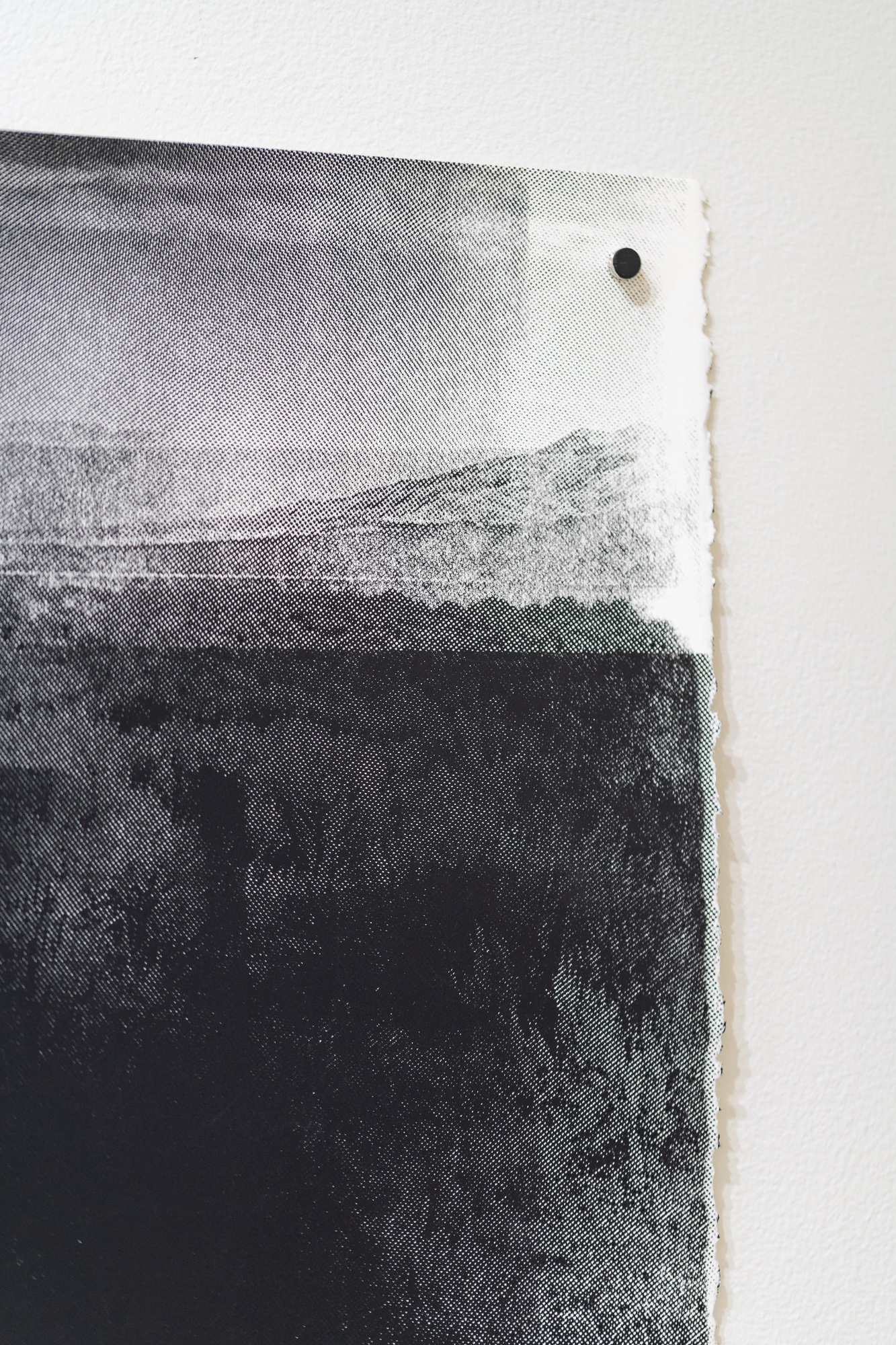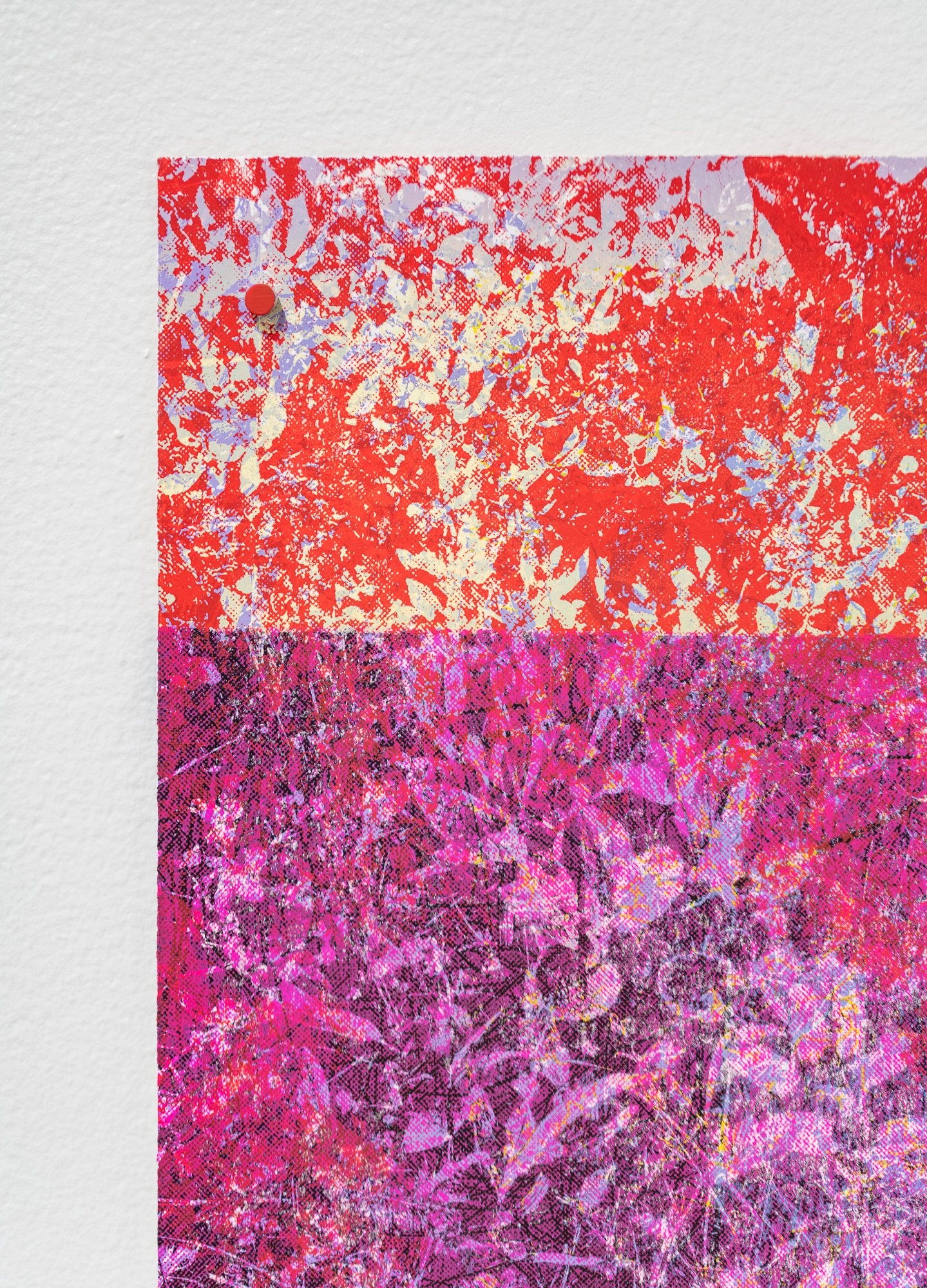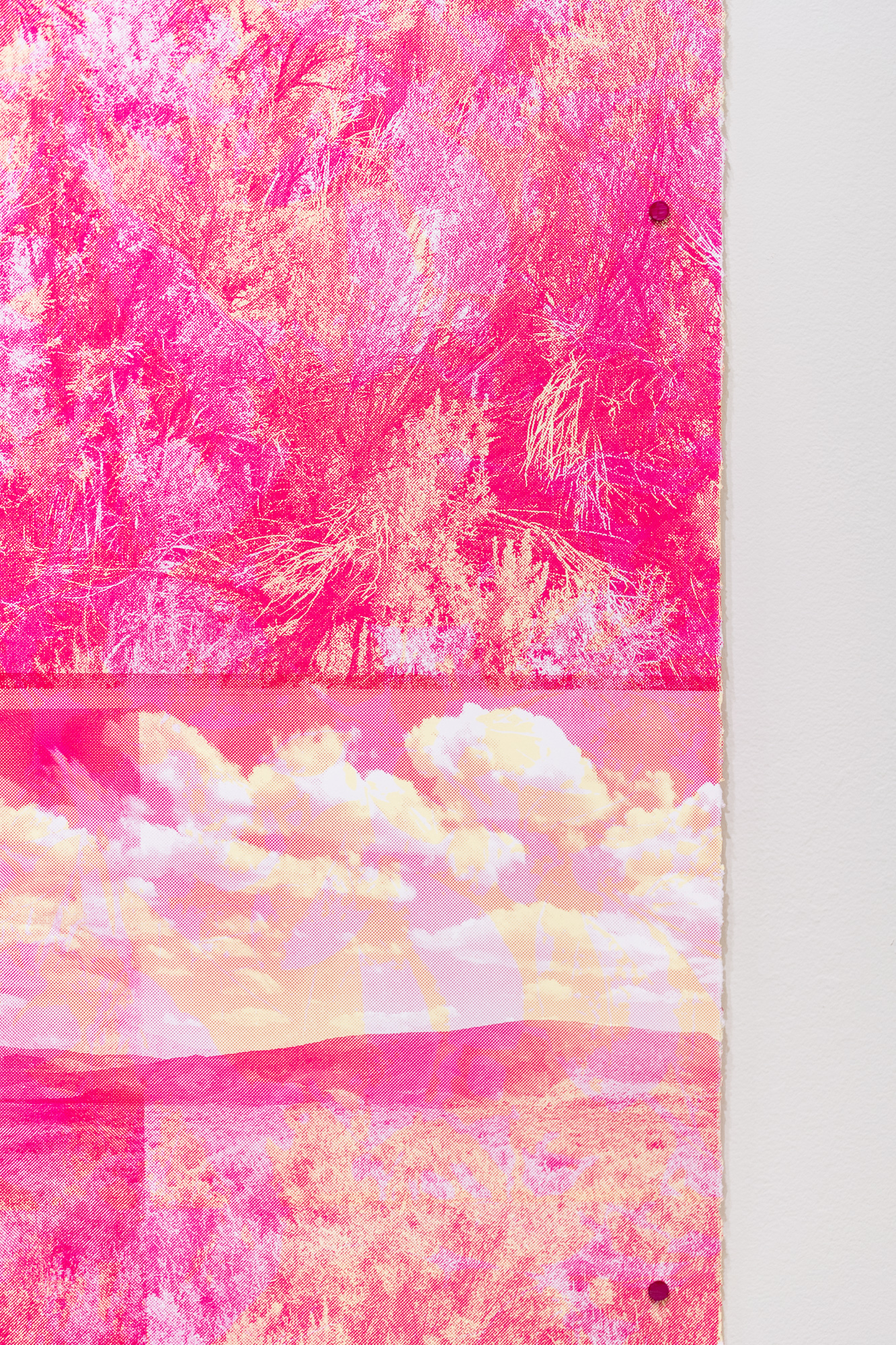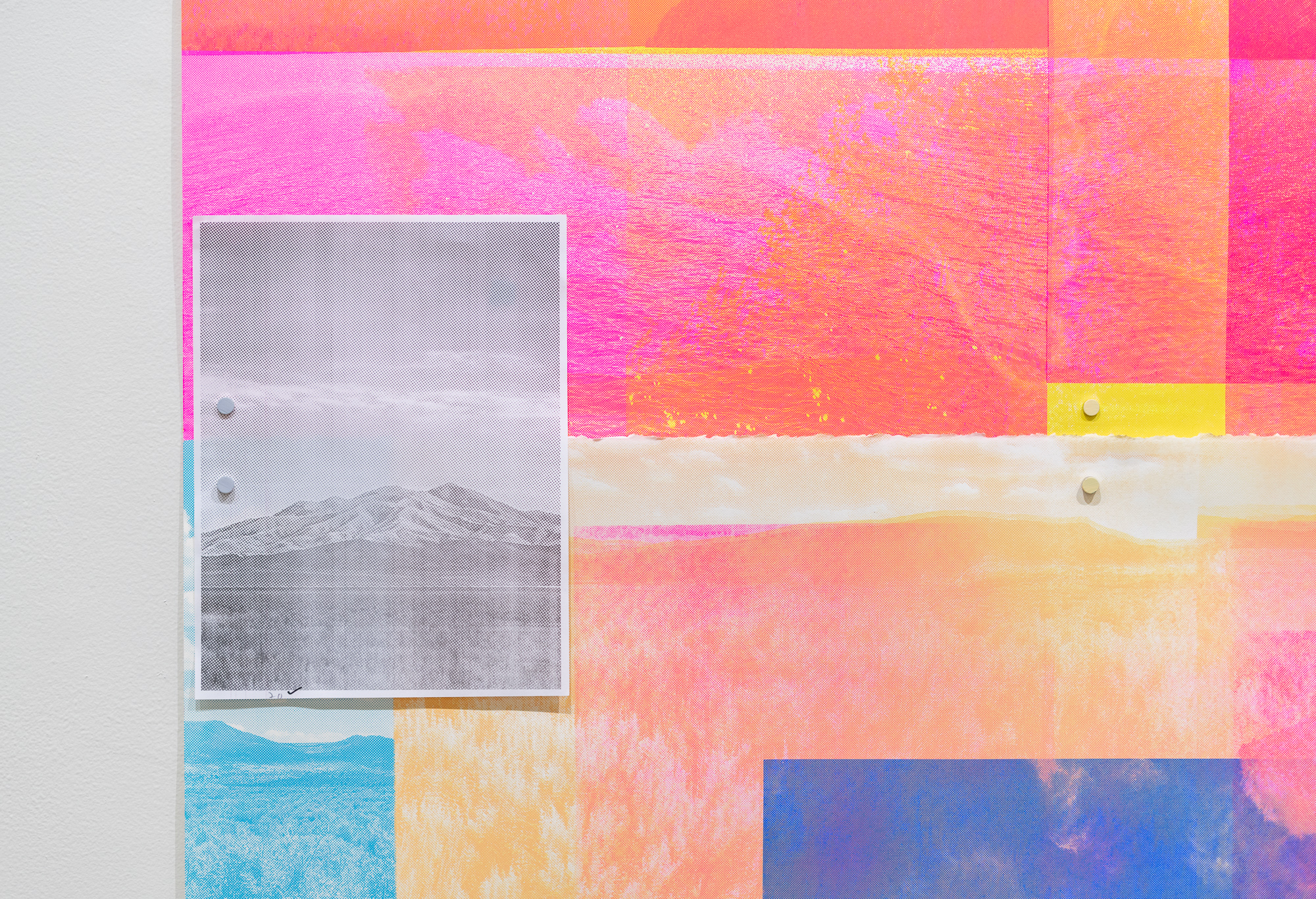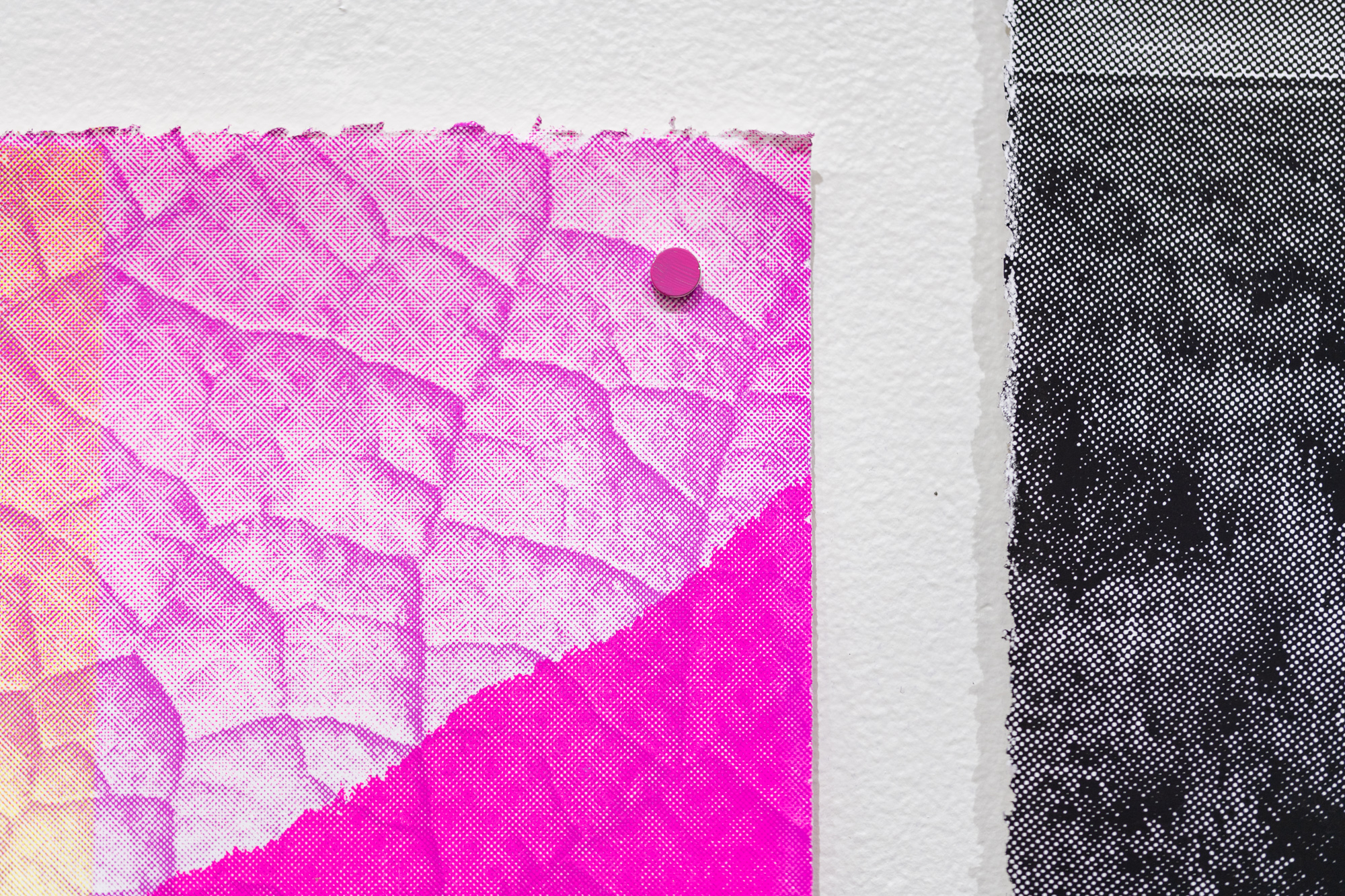Willy-Nilly
Kyle Adam Kalev Peets
June 7-June 29, 2025
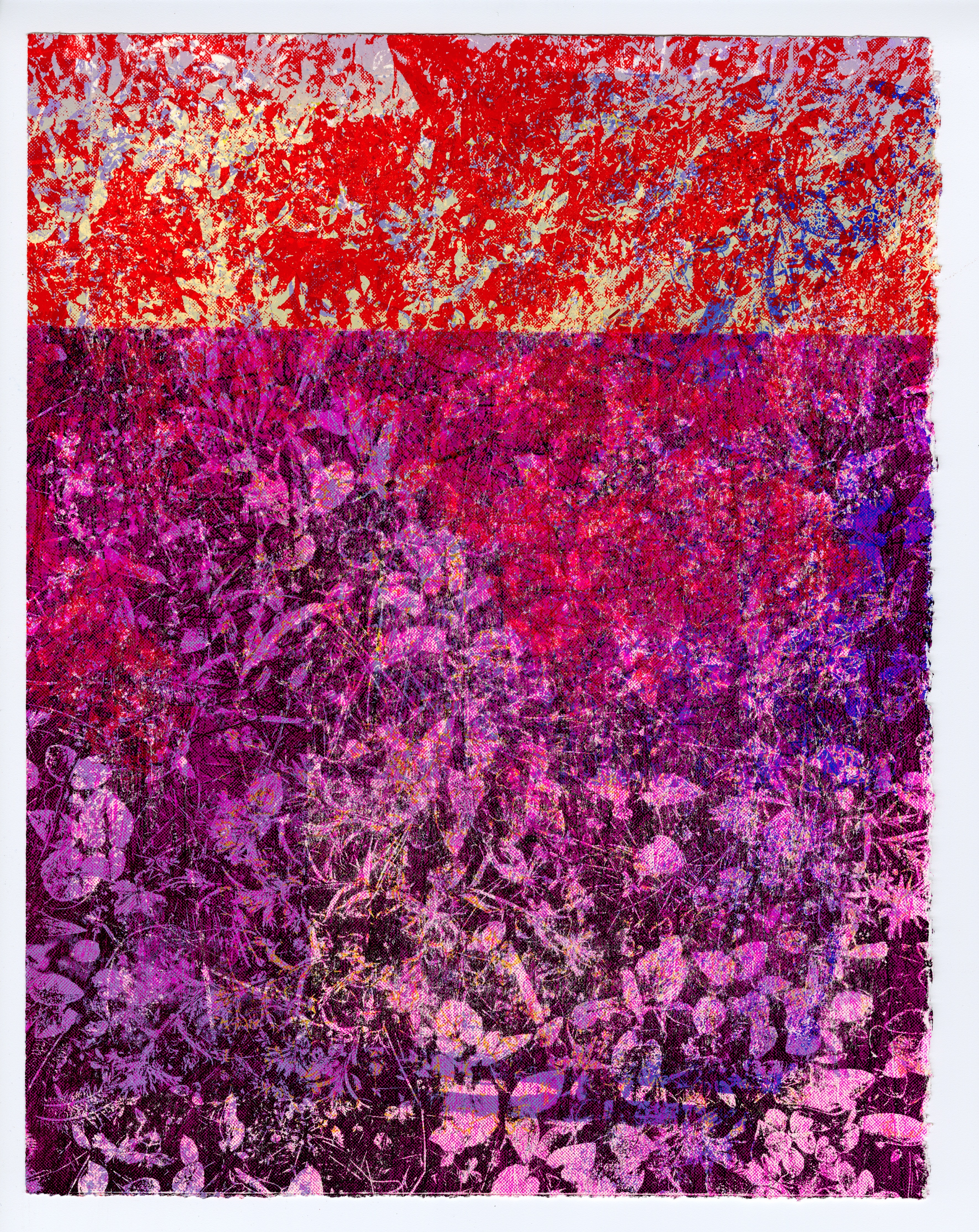
Opening Reception
Saturday, June 7, 5-8 pmOpen Hours
Sat-Sun 12-5 pmdrop in or by appointment
Email info@carnationcontemporary.com
to schedule a visit
Estonia was one of the last European countries to be forcefully converted from Paganism to Christianity. Today Estonia is one of the least religious countries in Europe. Only a small percentage of Estonians believe in God, but most believe they can talk to trees. This body of work has something to do with that.
This project begins with a slow turn back to my Estonian roots to embrace pre-Christian magical thinking, animism, awe and wonder. I employ an advanced print technique I call, Willy-Nilly, that prioritizes intuition, failure and chance over logic. Layering and repetition are used to create hypnotic rhythms that look back to ancient spiritual technologies that disrupt logical thinking, like spinning in a circle or repeating a word over and over. The layering of multiple photographs onto one picture plane challenges the western obsession with the individual — especially as it’s enforced by the single authoritative lens of the camera. These kinds of images obstruct legibility but also surface new forms of reading. Layering creates pictorial anomalies and abstractions that confuse our relationship to nature as it’s mediated through images. I think of this as an alternative tool for understanding, revealing the hidden by challenging how we expect landscape pictures to look.
This project begins with a slow turn back to my Estonian roots to embrace pre-Christian magical thinking, animism, awe and wonder. I employ an advanced print technique I call, Willy-Nilly, that prioritizes intuition, failure and chance over logic. Layering and repetition are used to create hypnotic rhythms that look back to ancient spiritual technologies that disrupt logical thinking, like spinning in a circle or repeating a word over and over. The layering of multiple photographs onto one picture plane challenges the western obsession with the individual — especially as it’s enforced by the single authoritative lens of the camera. These kinds of images obstruct legibility but also surface new forms of reading. Layering creates pictorial anomalies and abstractions that confuse our relationship to nature as it’s mediated through images. I think of this as an alternative tool for understanding, revealing the hidden by challenging how we expect landscape pictures to look.
ARTIST
Kyle Adam Kalev Peets is a multi-disciplinary artist-educator and plant lover. He has had solo exhibitions at Carnation Contemporary (Portland, OR), Platte Forum gallery (Denver, CO) as well as group exhibitions like, Art Shanty on the frozen White Bear Lake (Minneapolis, MN). His work was published in the periodical SPRTS by Endless Editions (New York, NY), archived in the Watson Library Special Collections, The Metropolitan Museum of Art and MoMA, Manhattan, Artists’ Books. He received his MFA in Printmaking from the University of Iowa as well as a Graduate Certificate in Book Arts from the Iowa Center for The Book. Kyle currently teaches Print and Book Arts at Whitman College in Walla Walla, Washington.